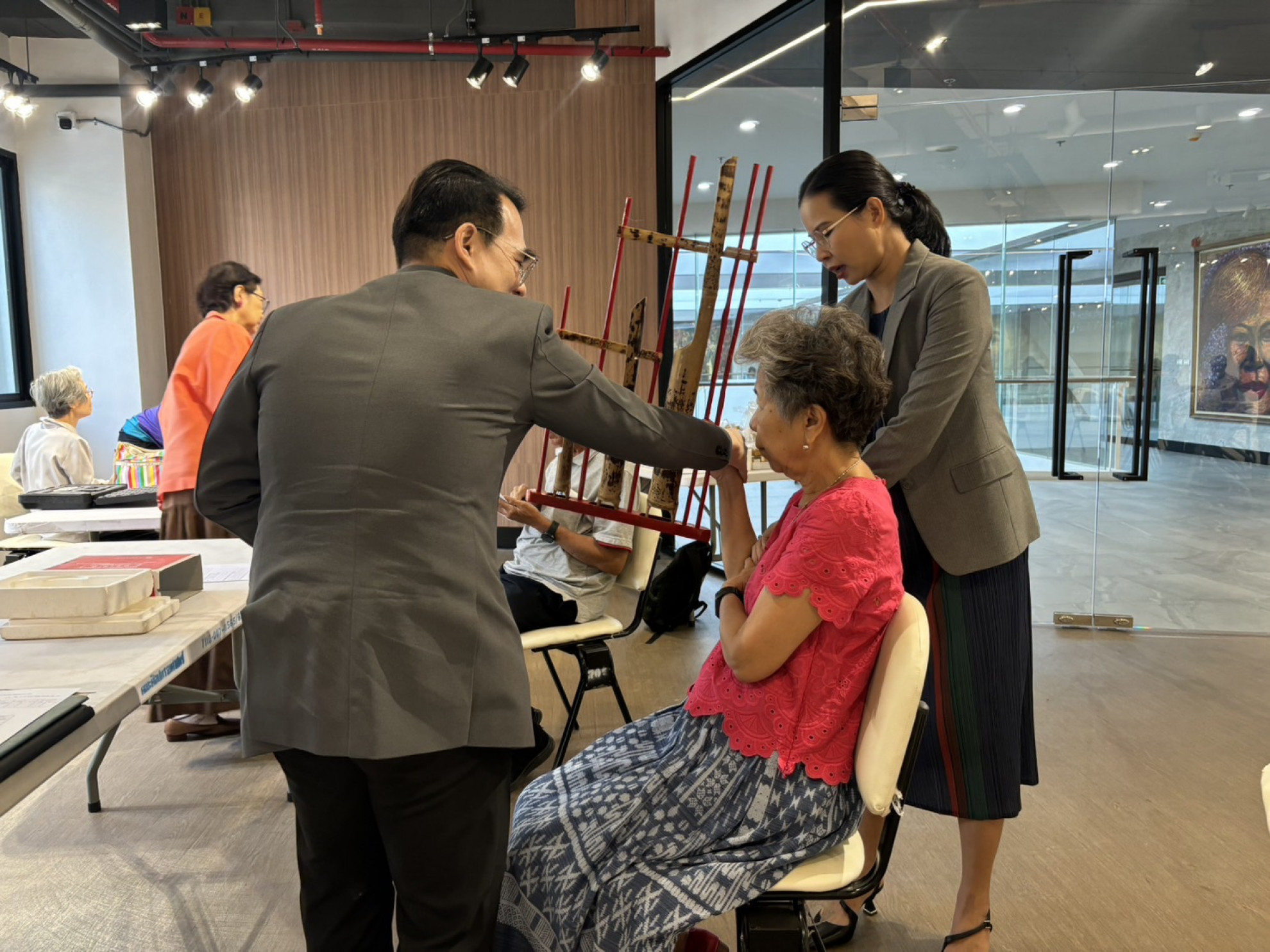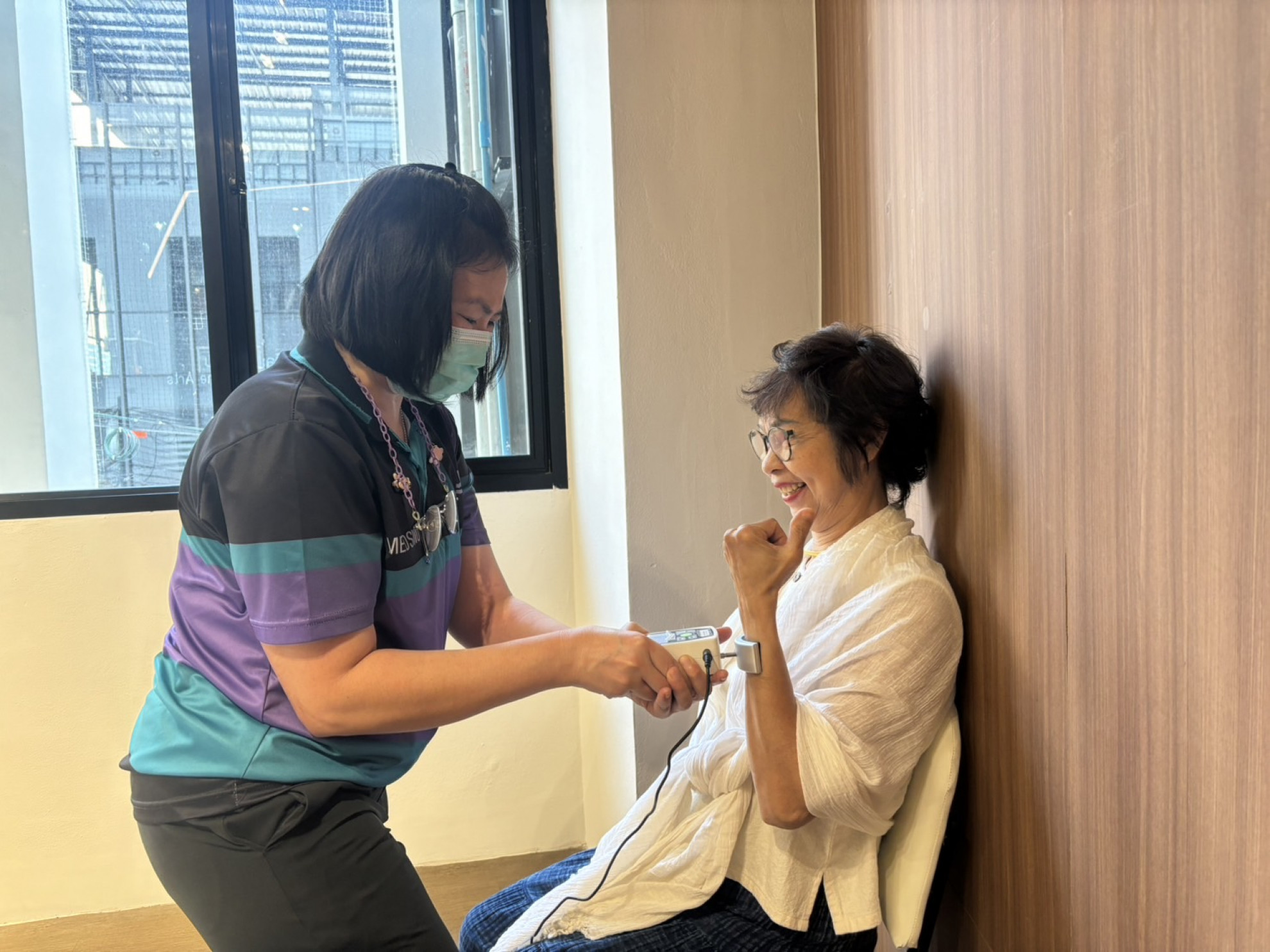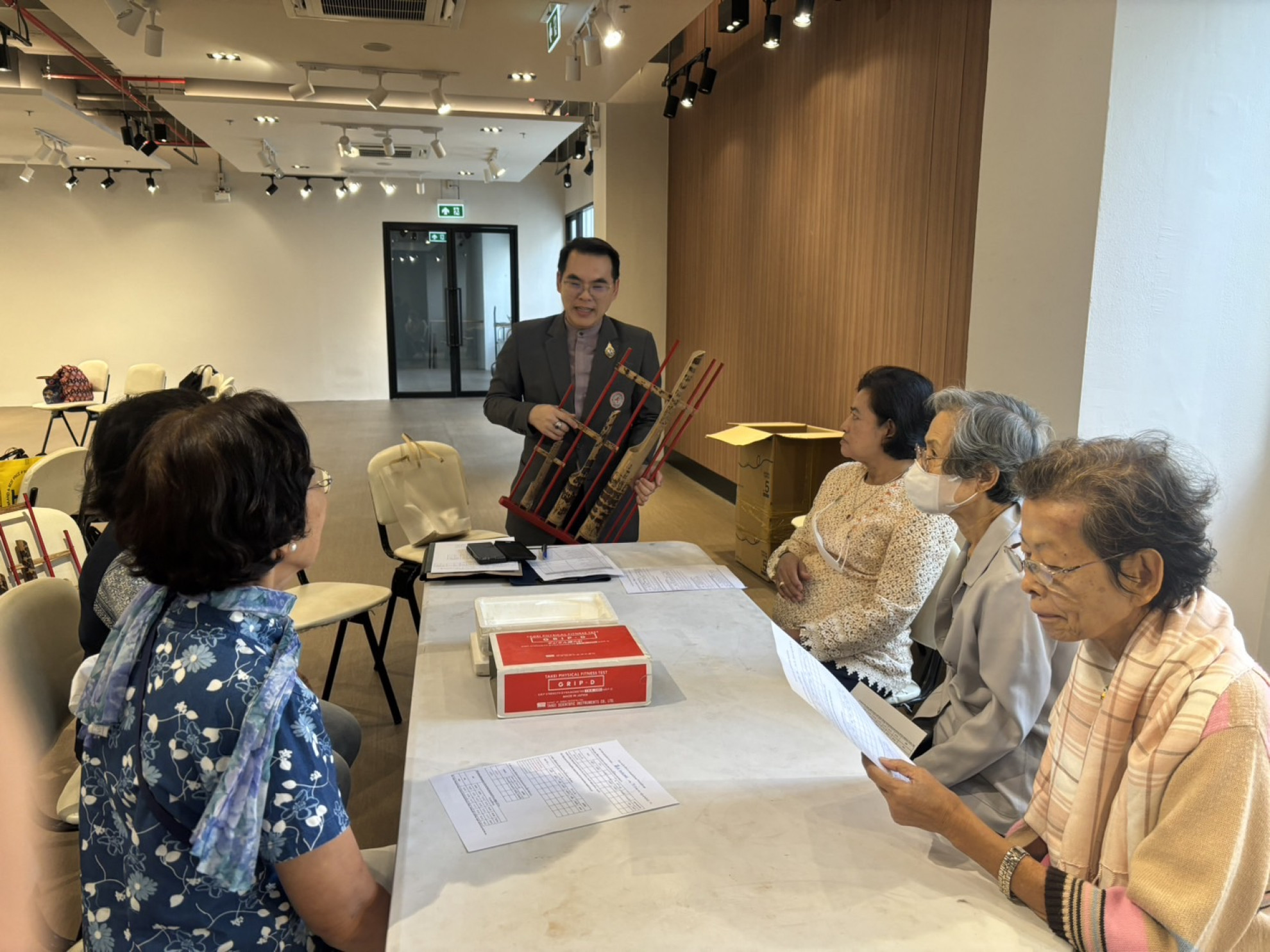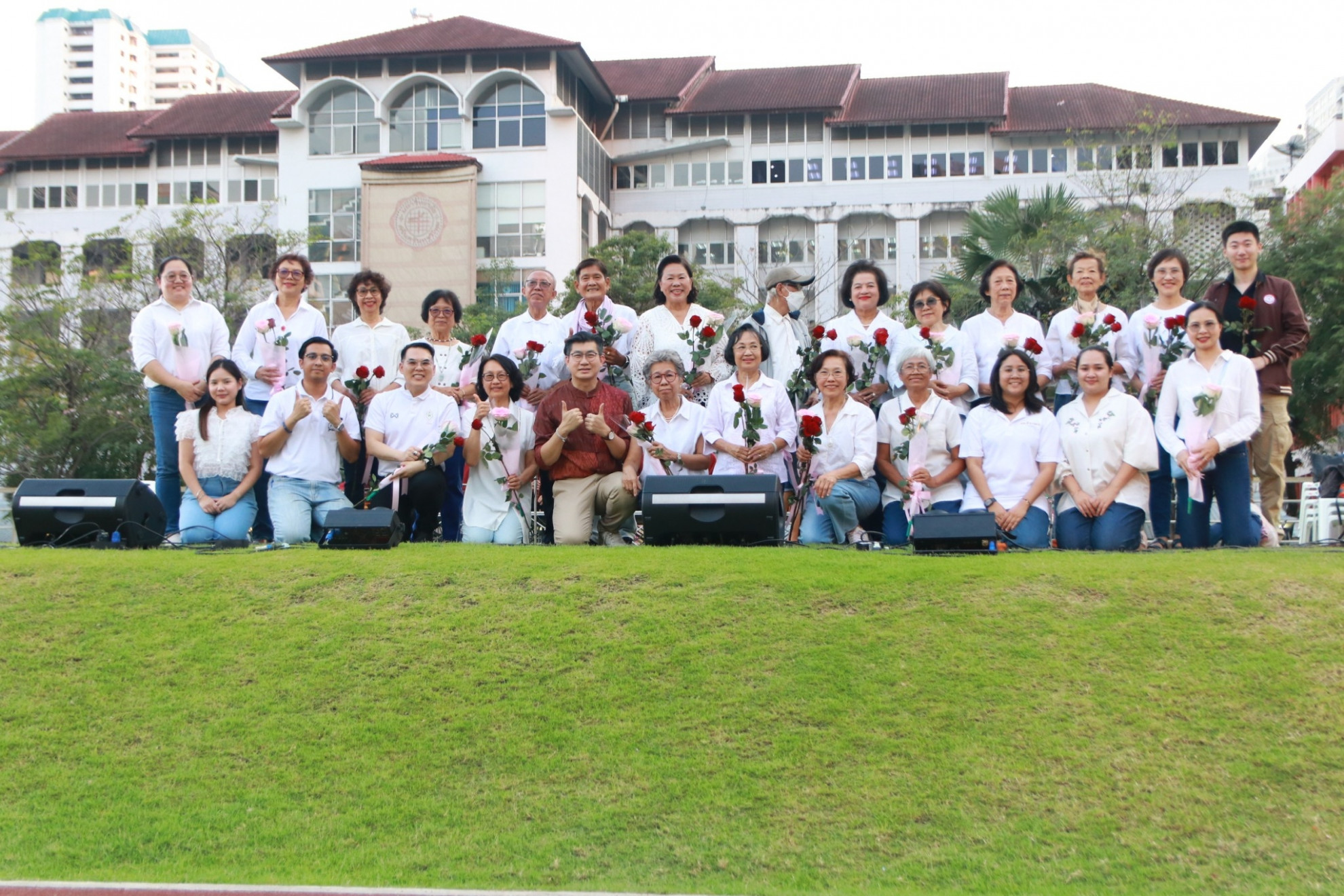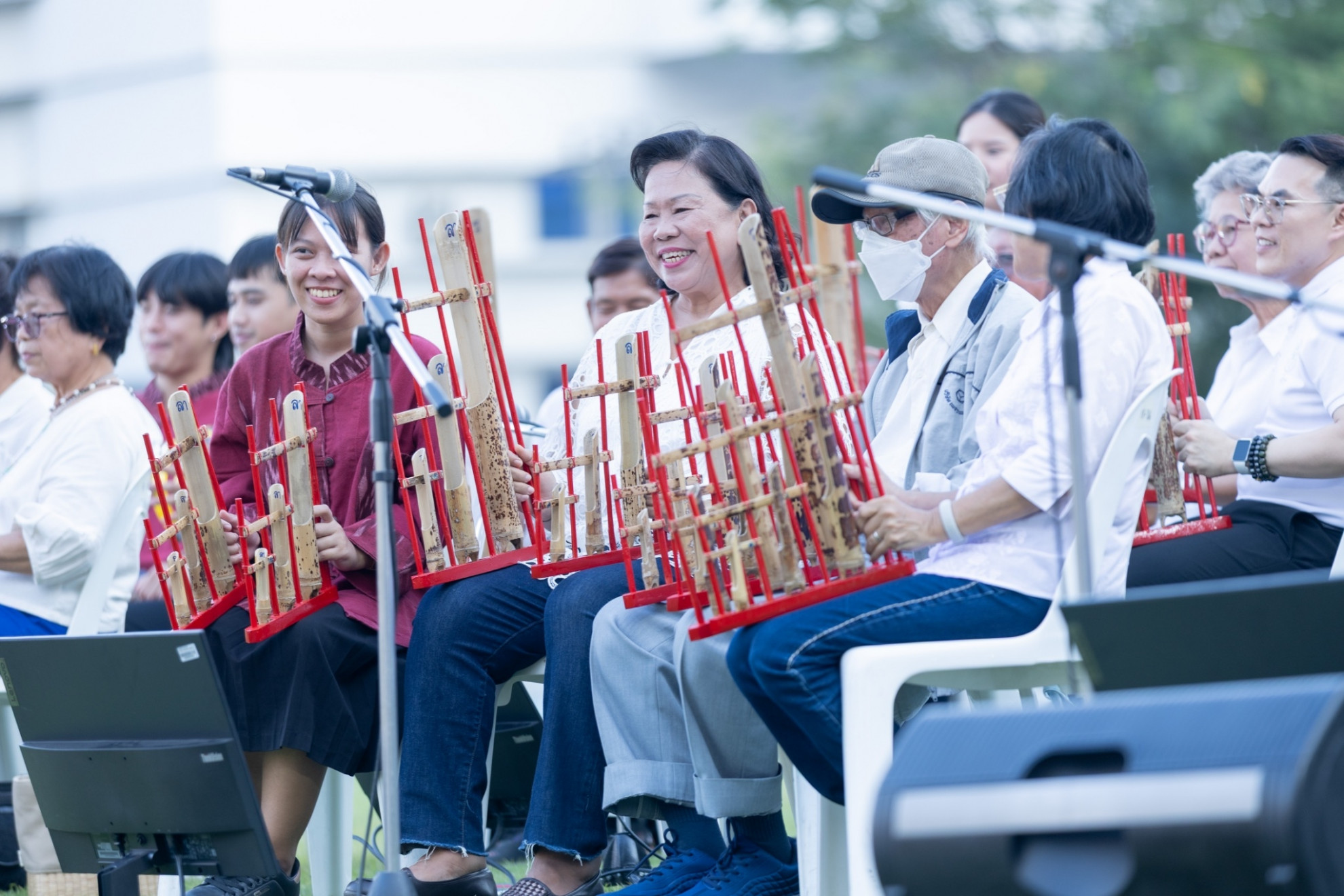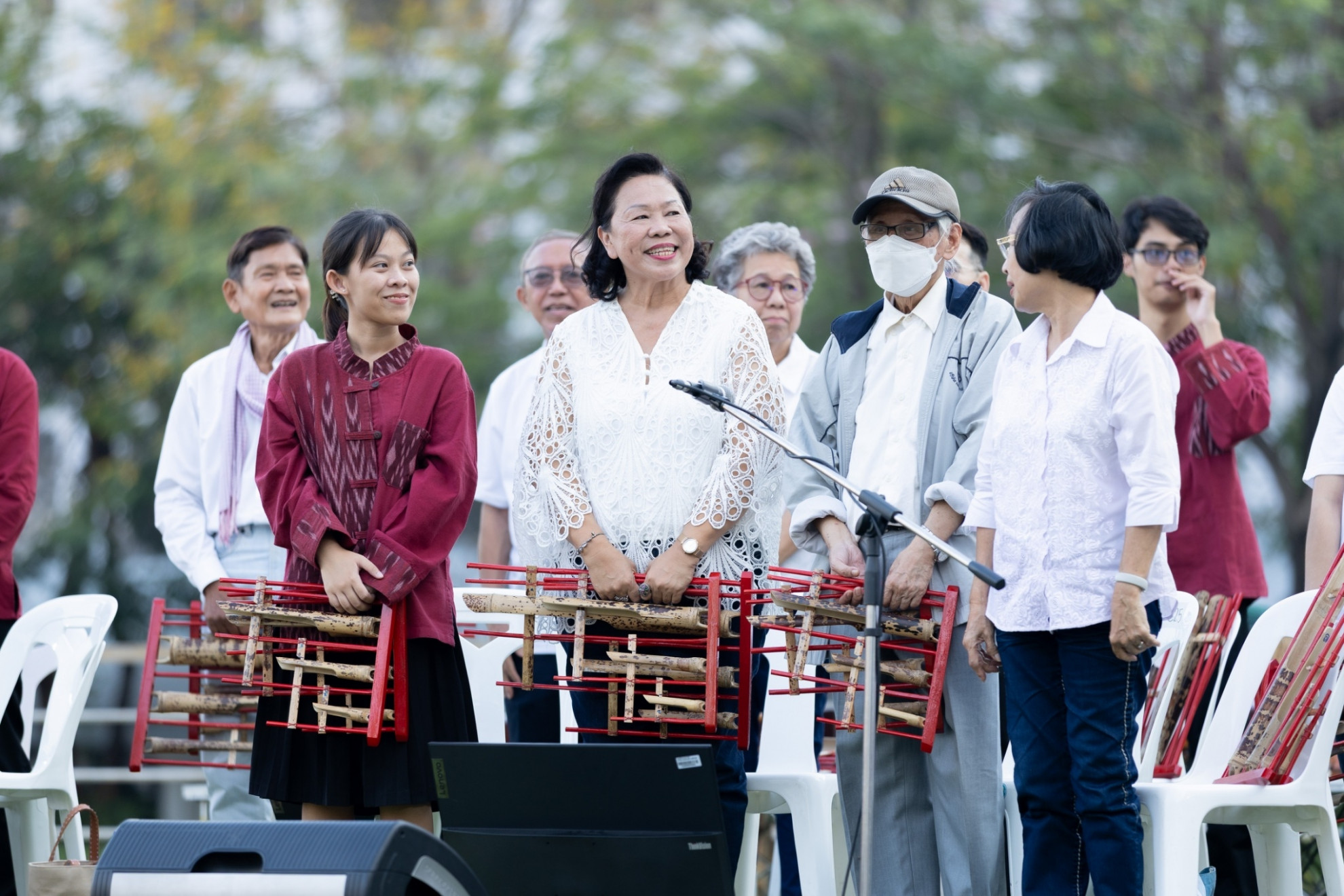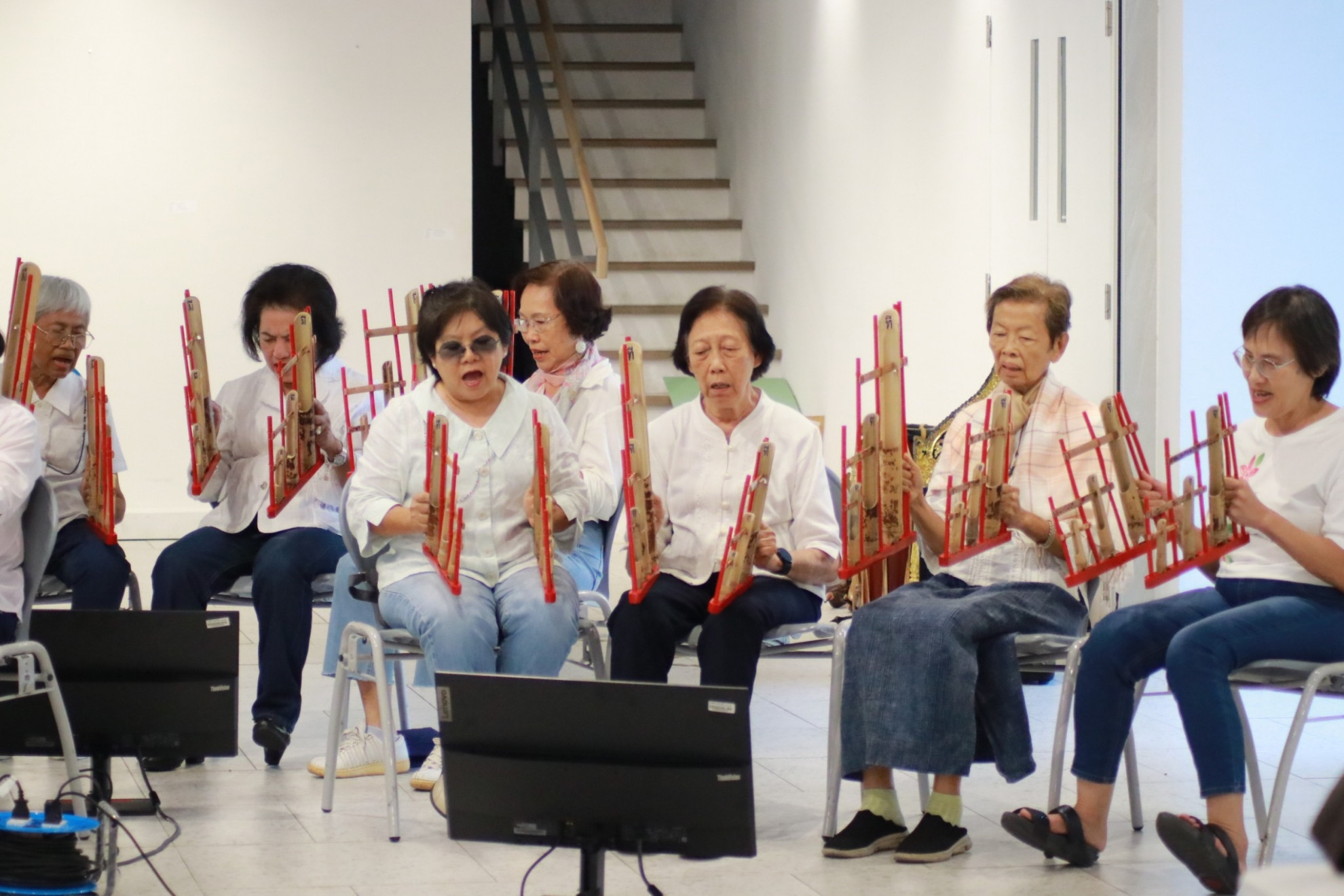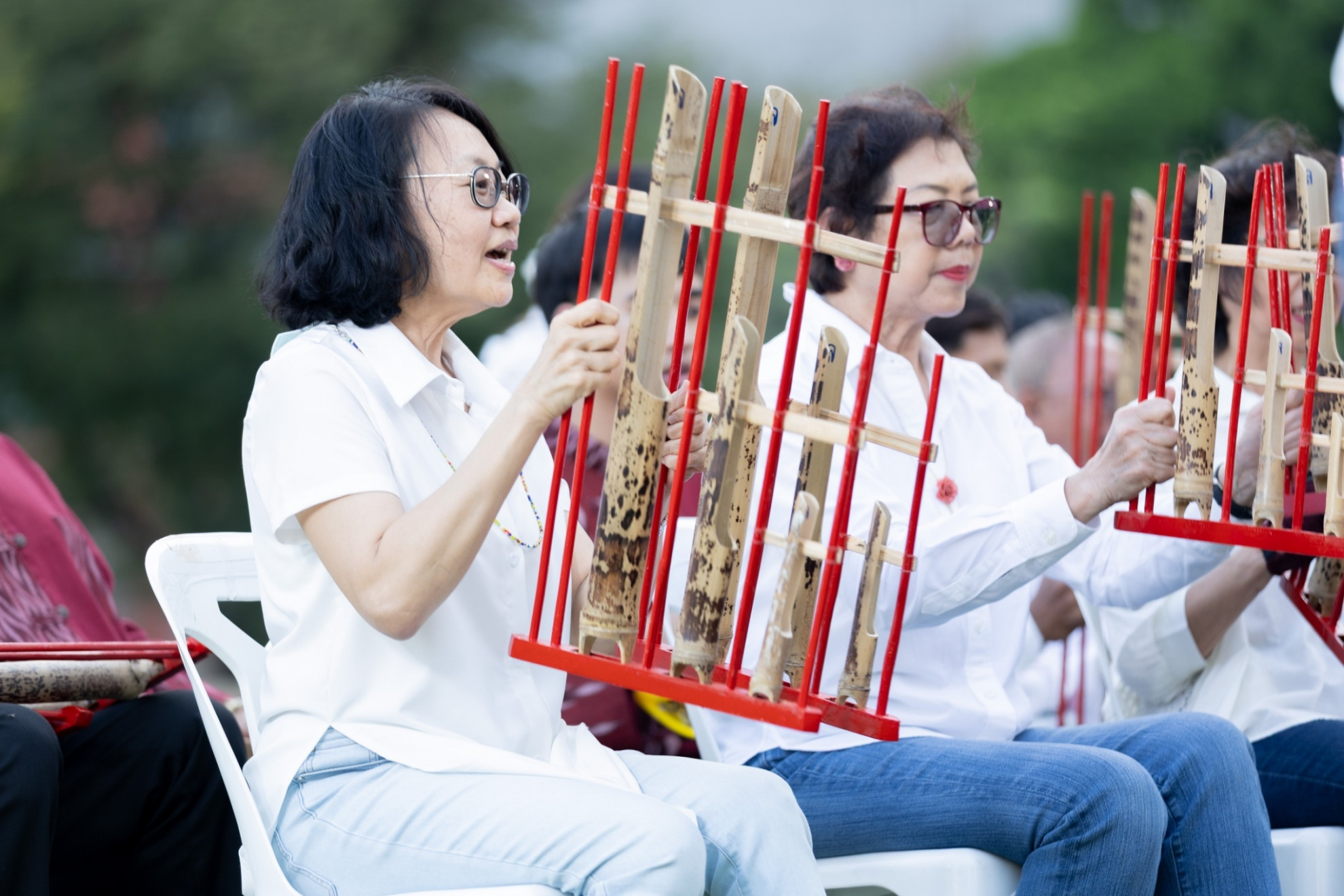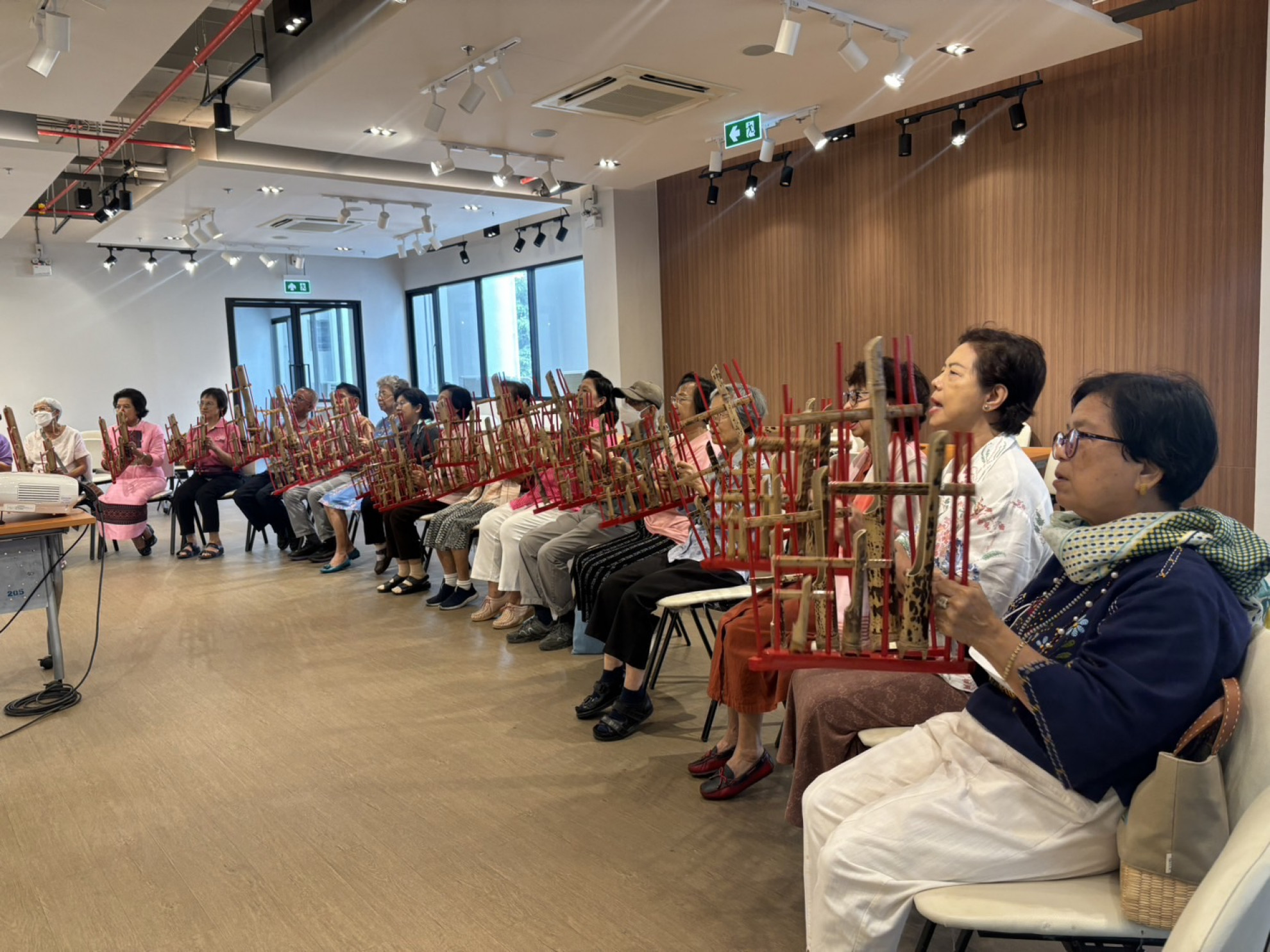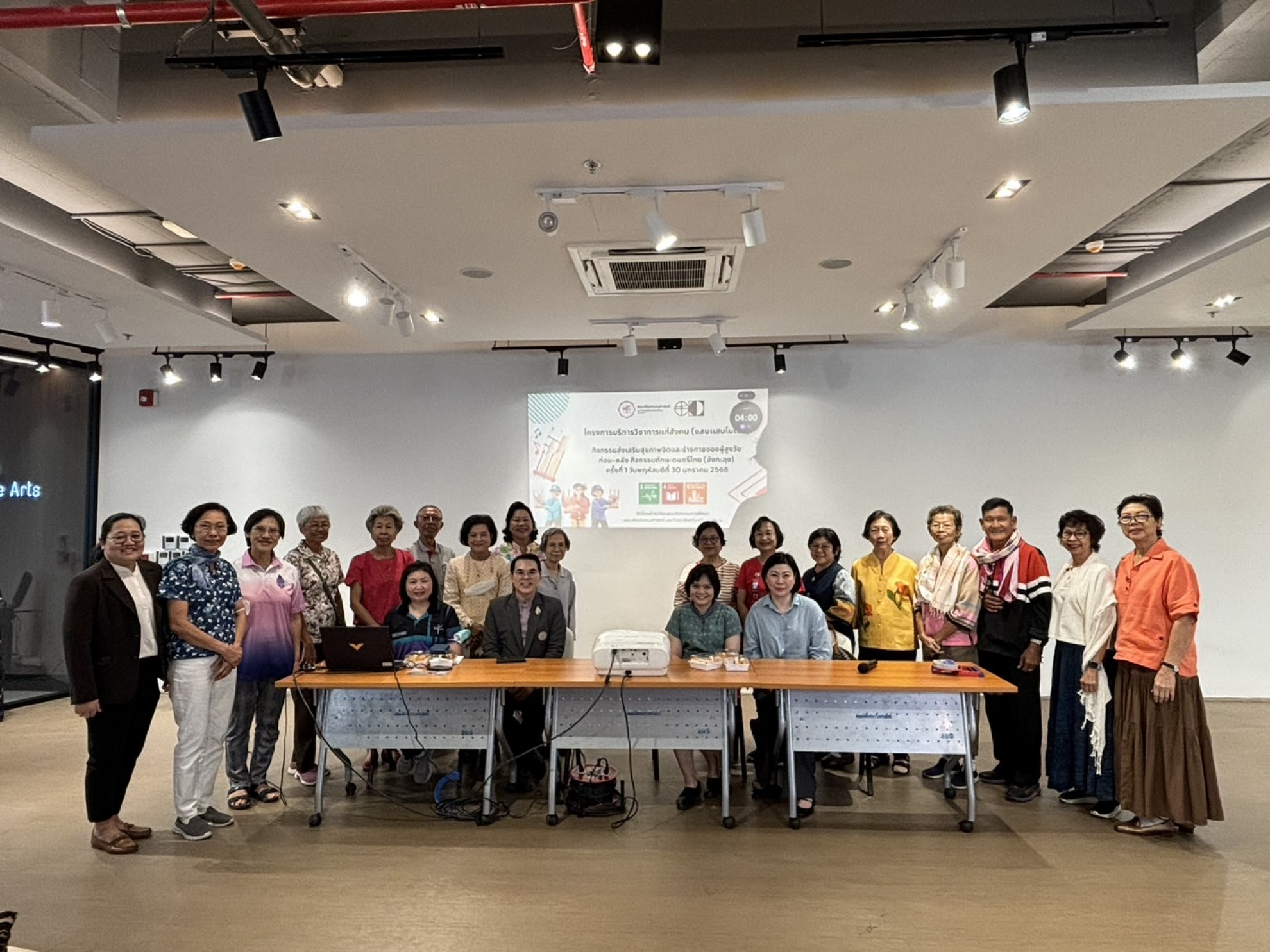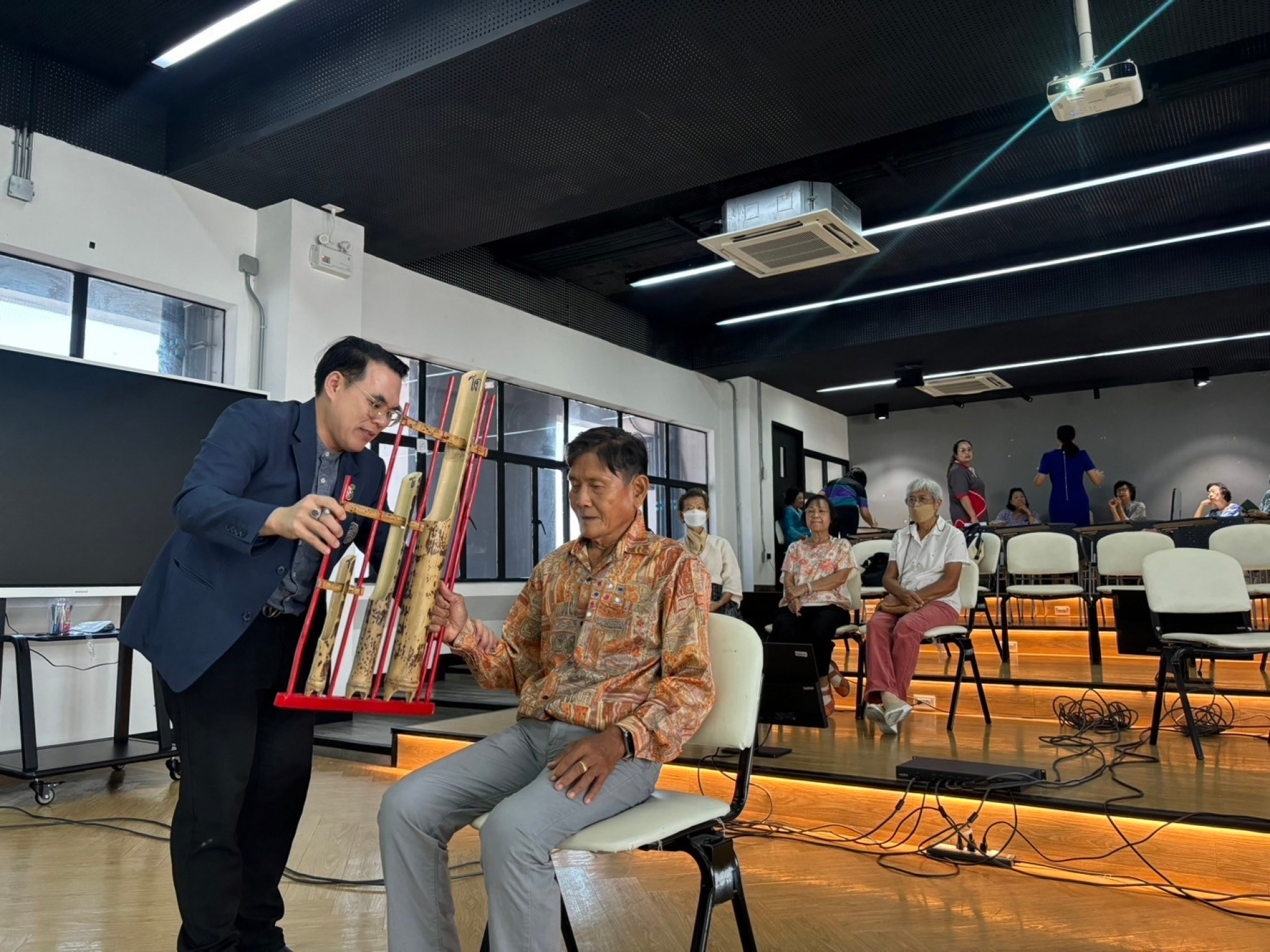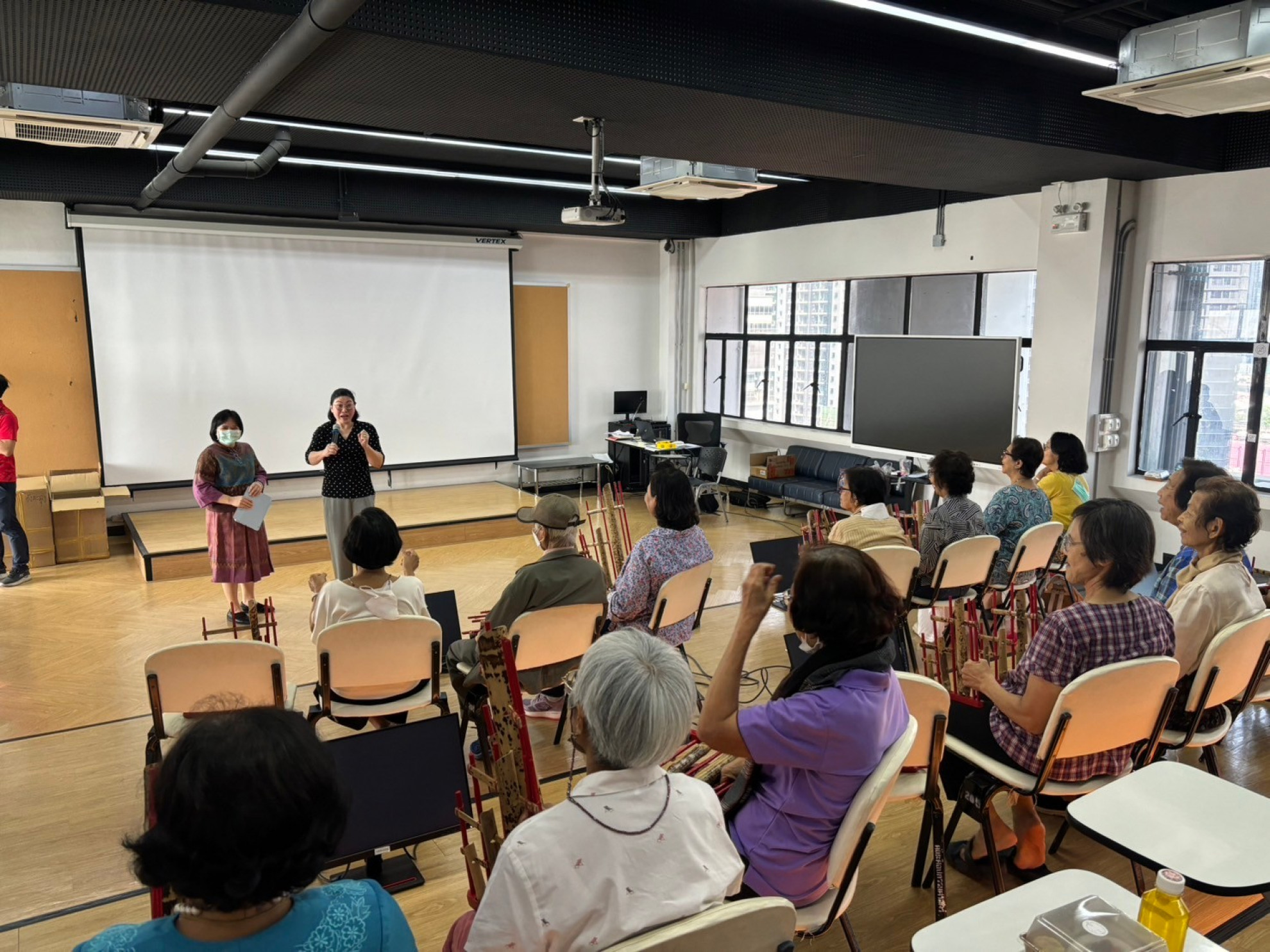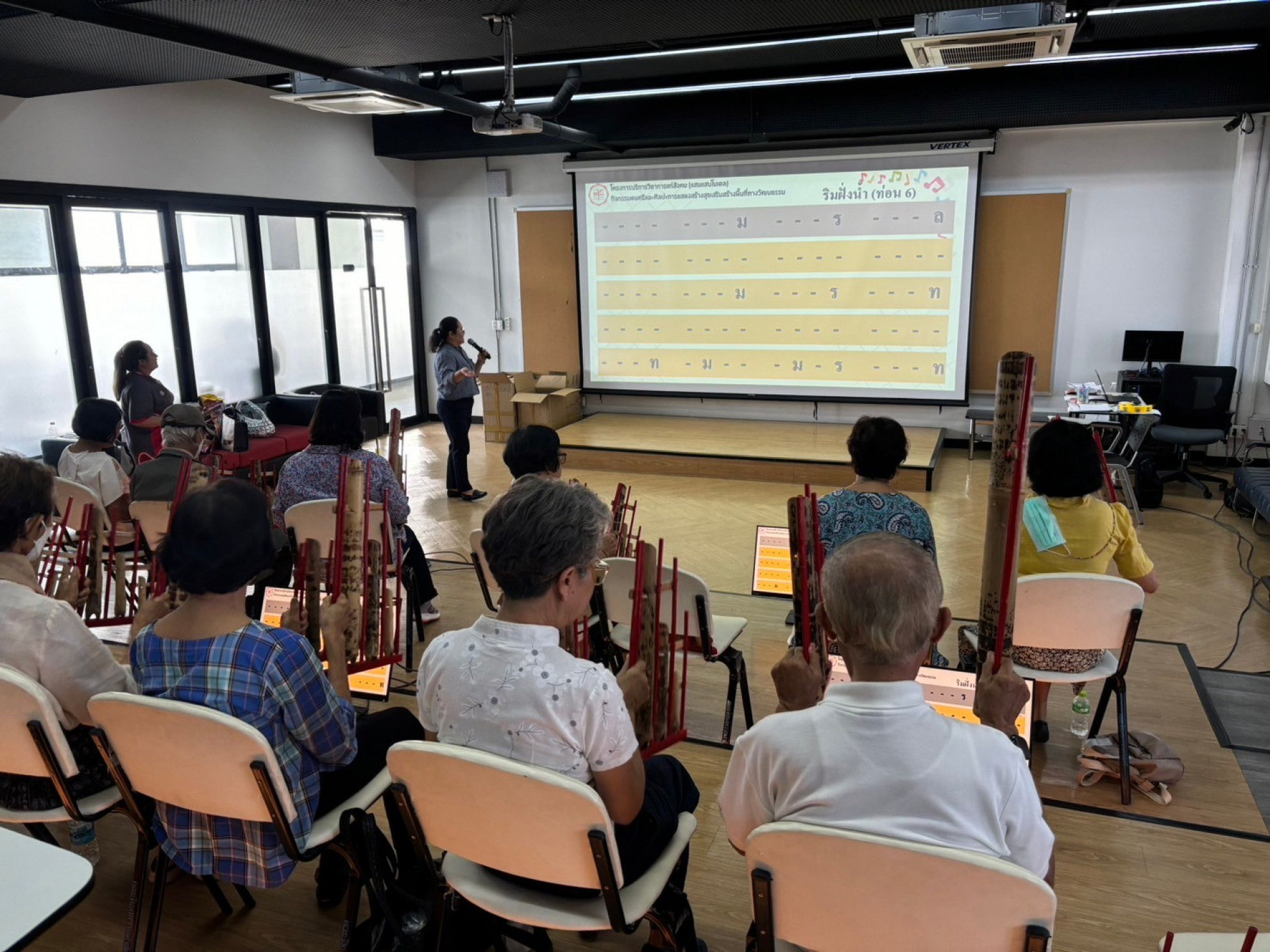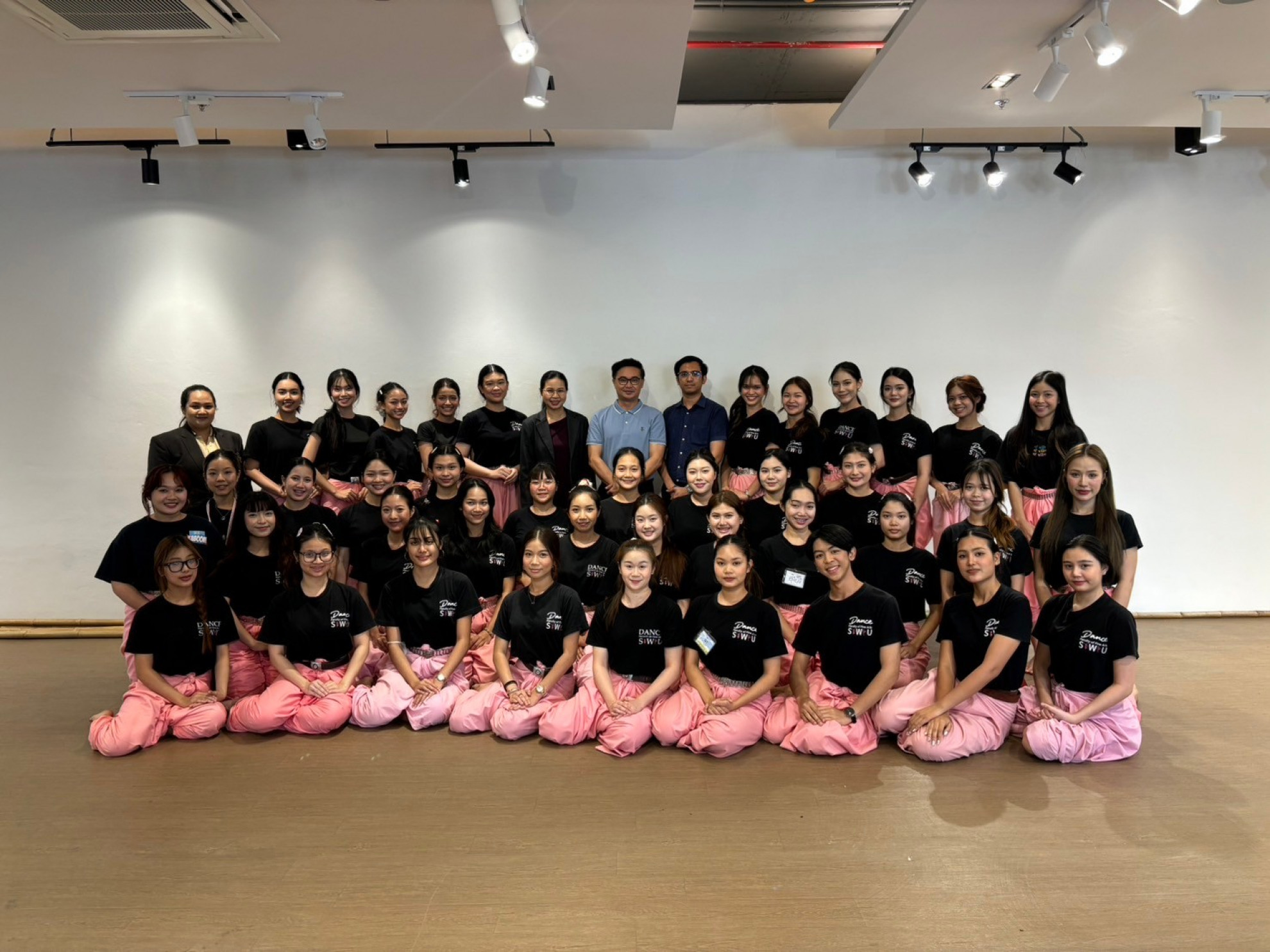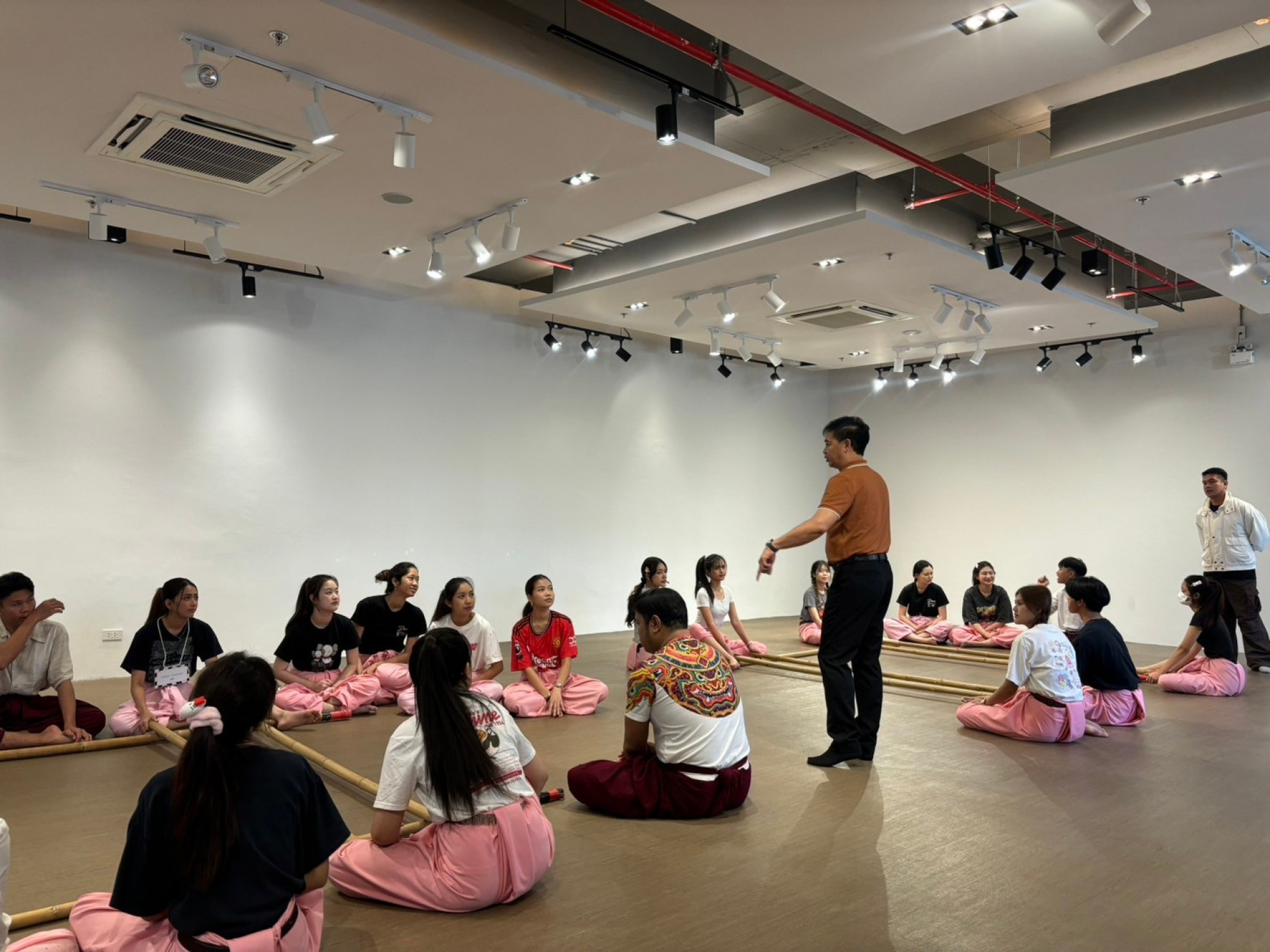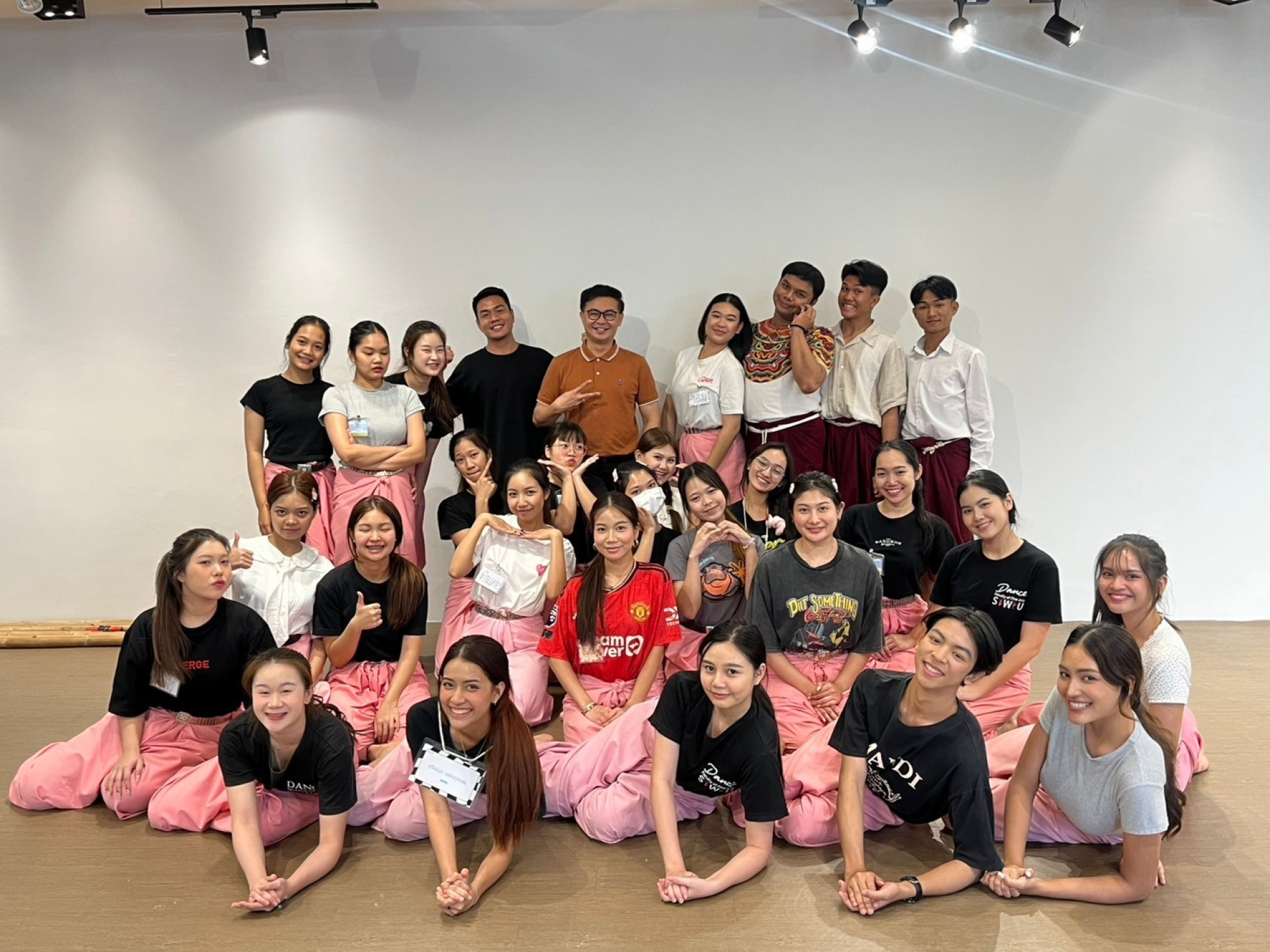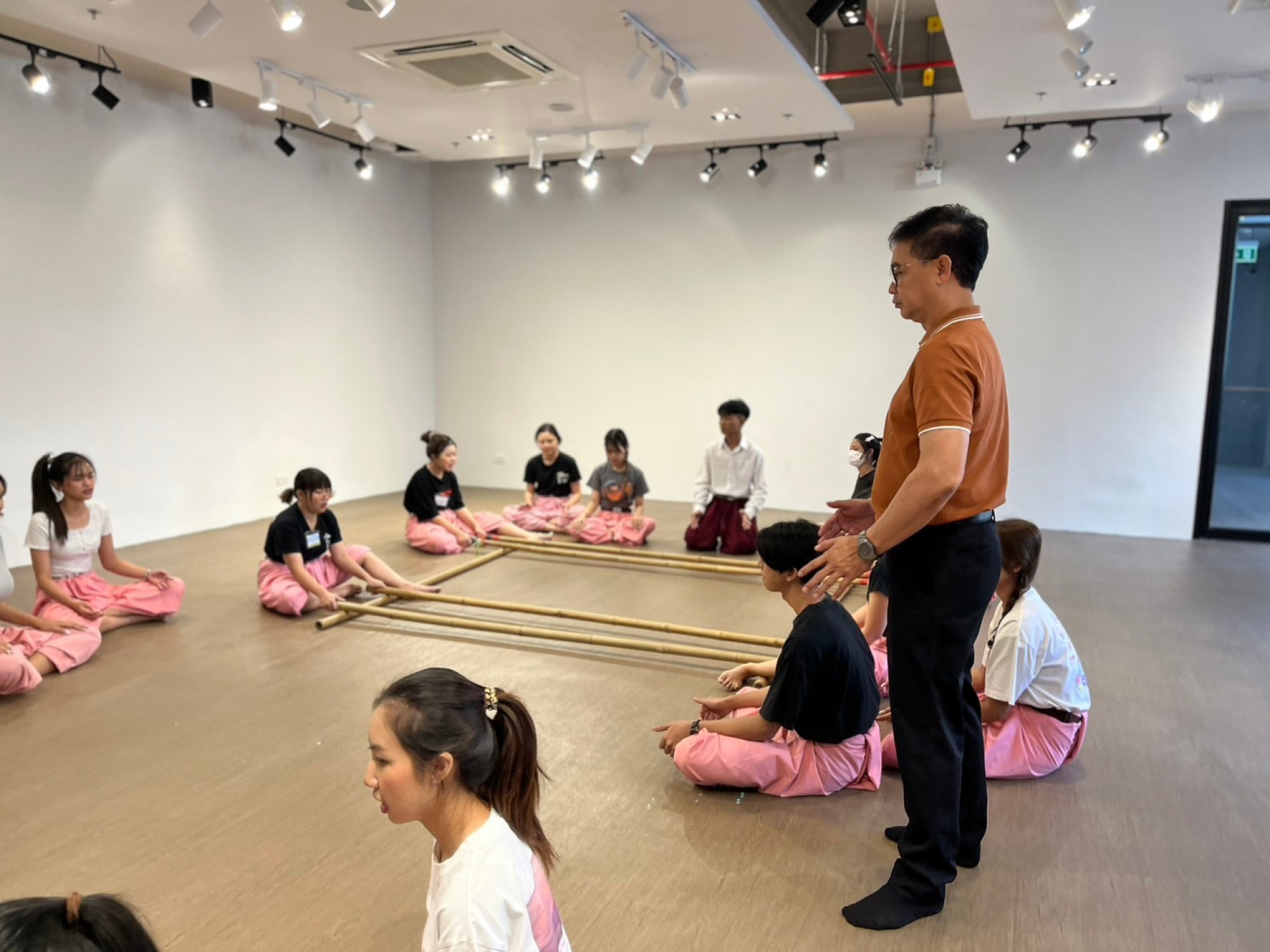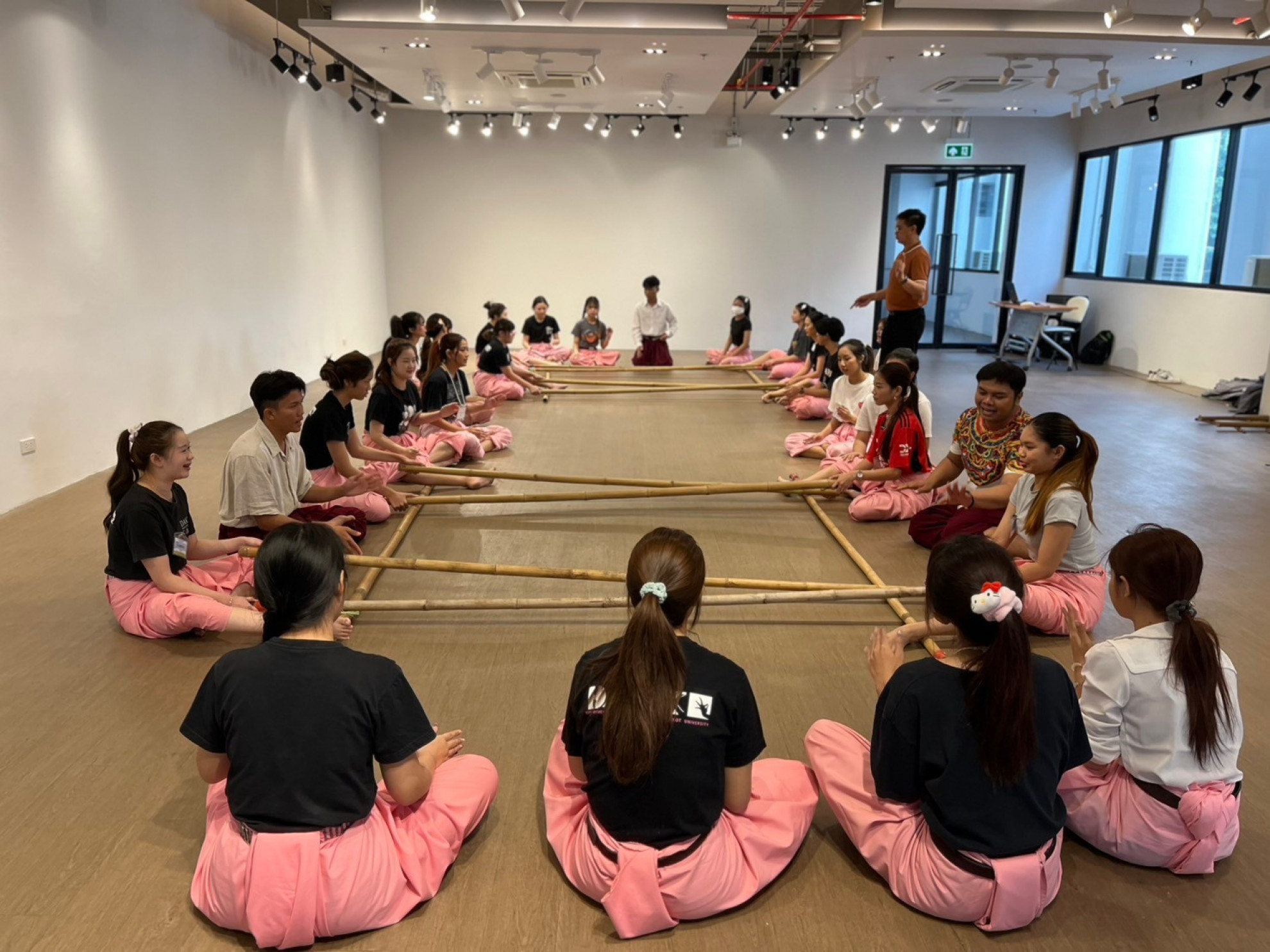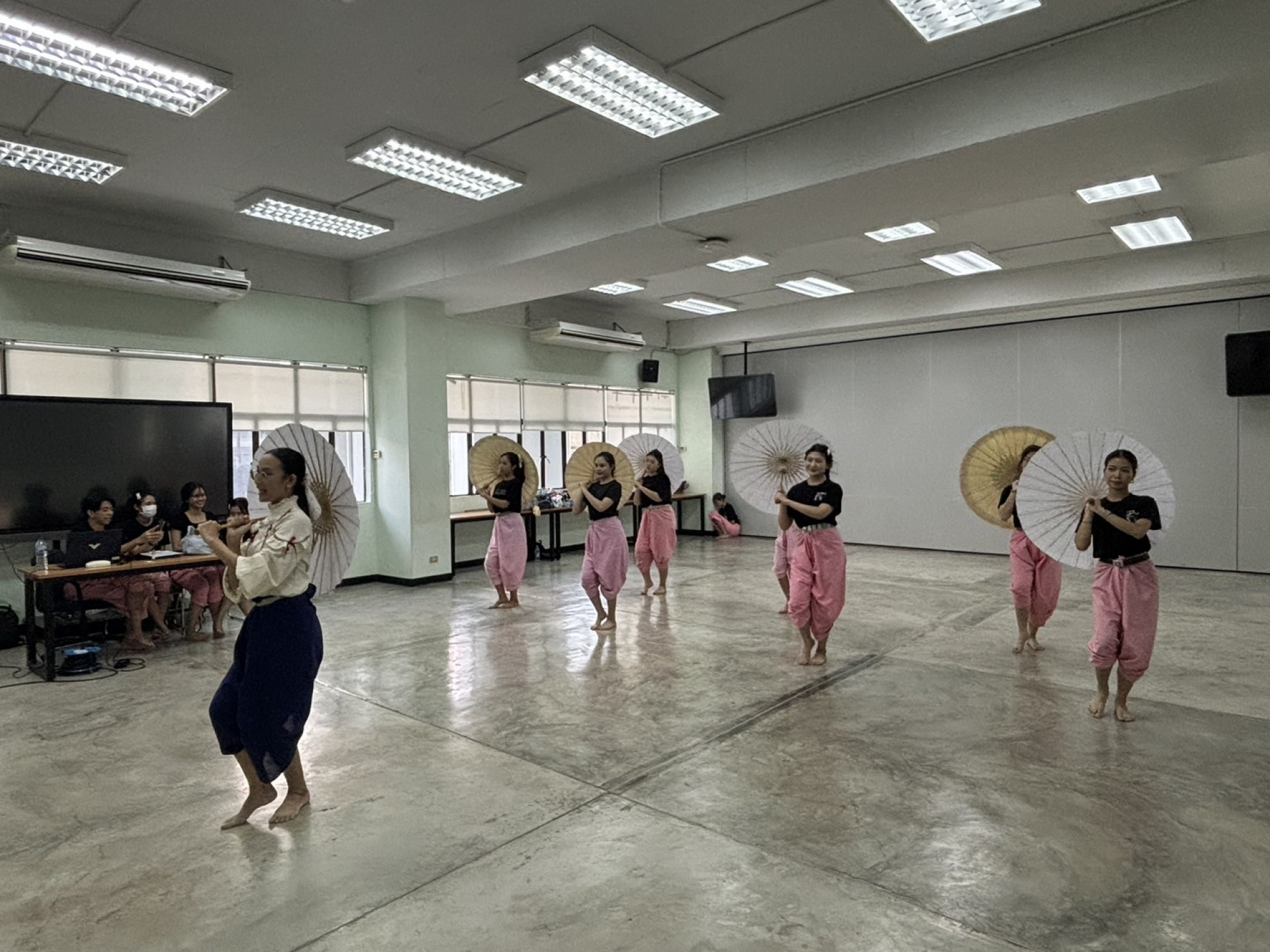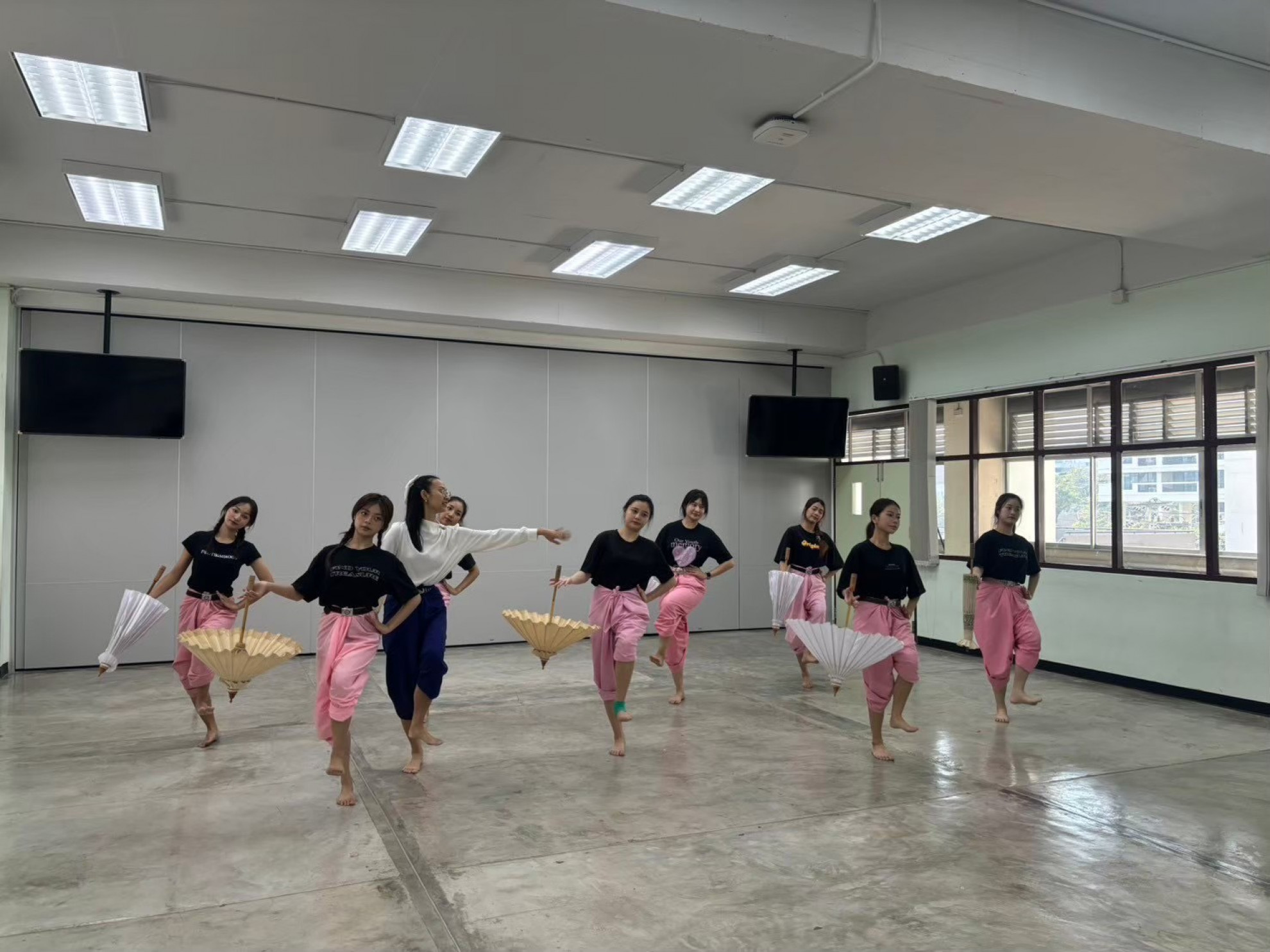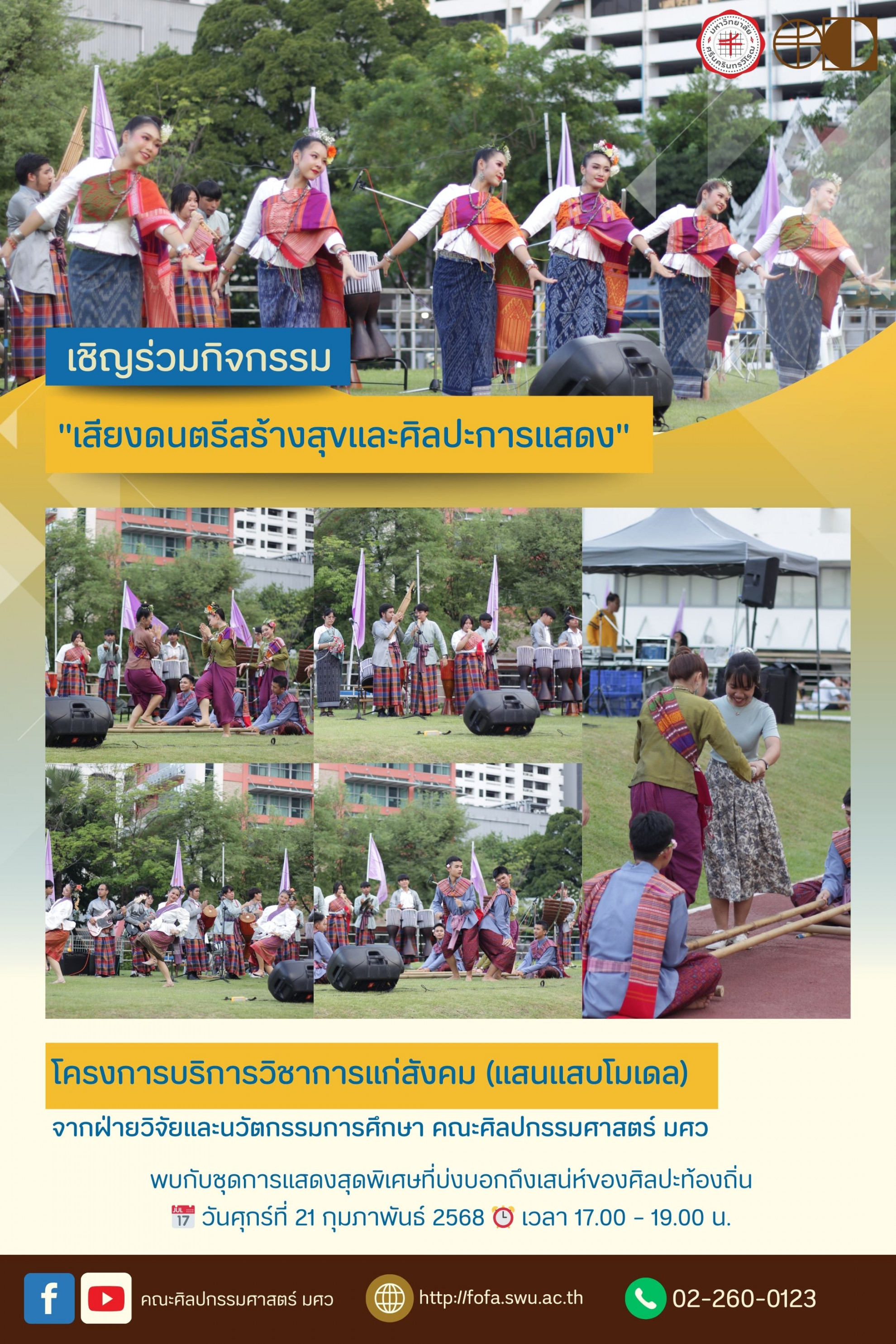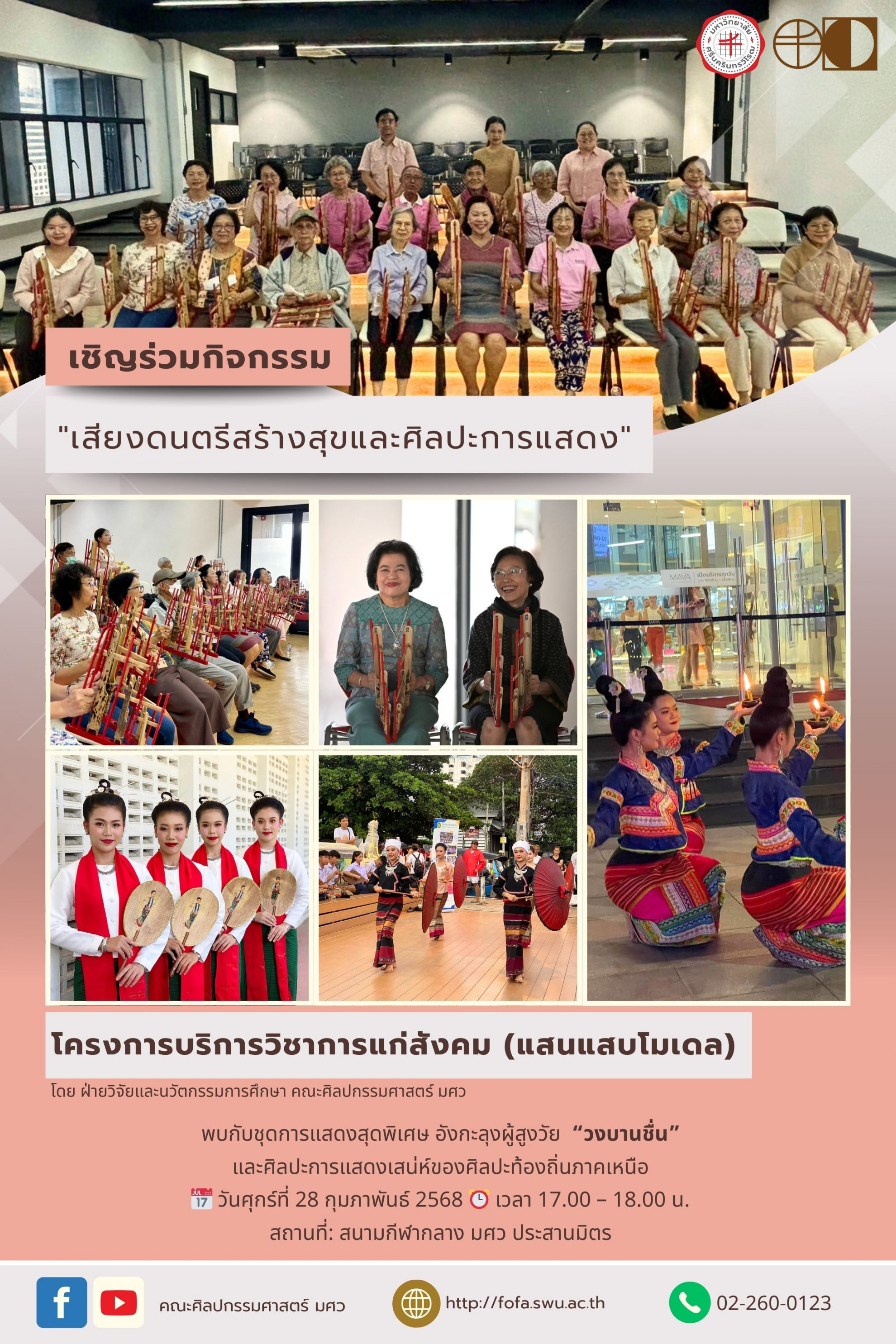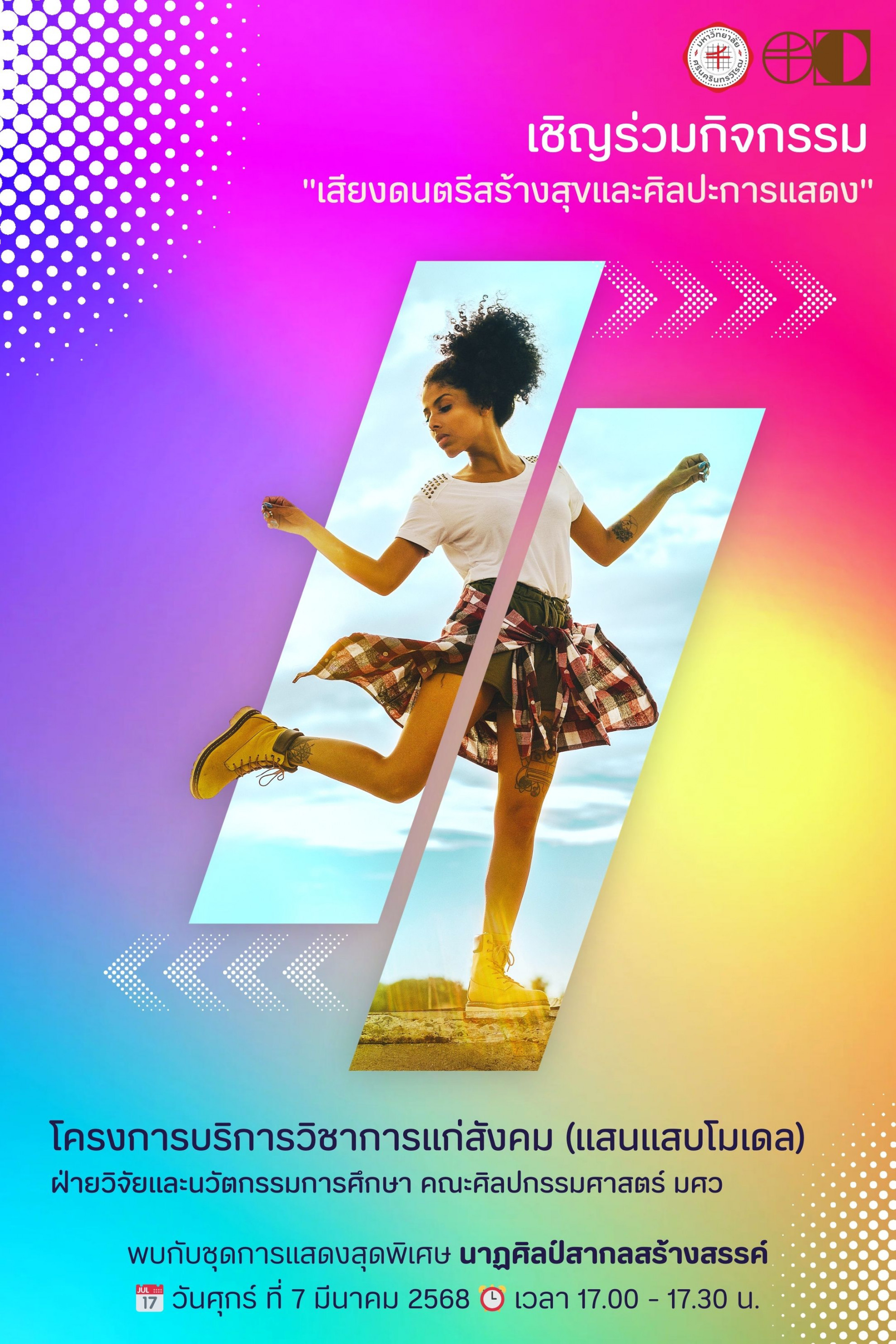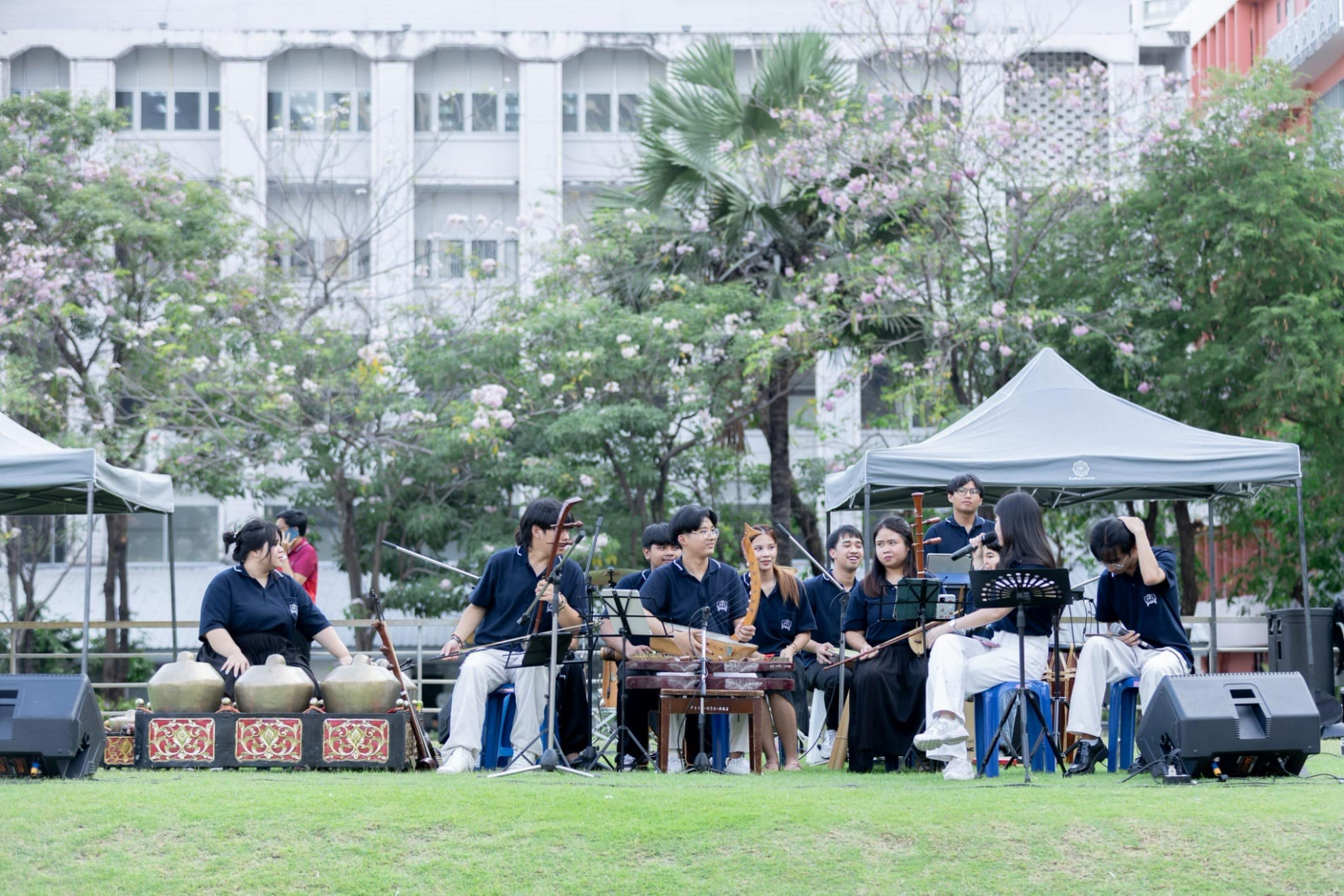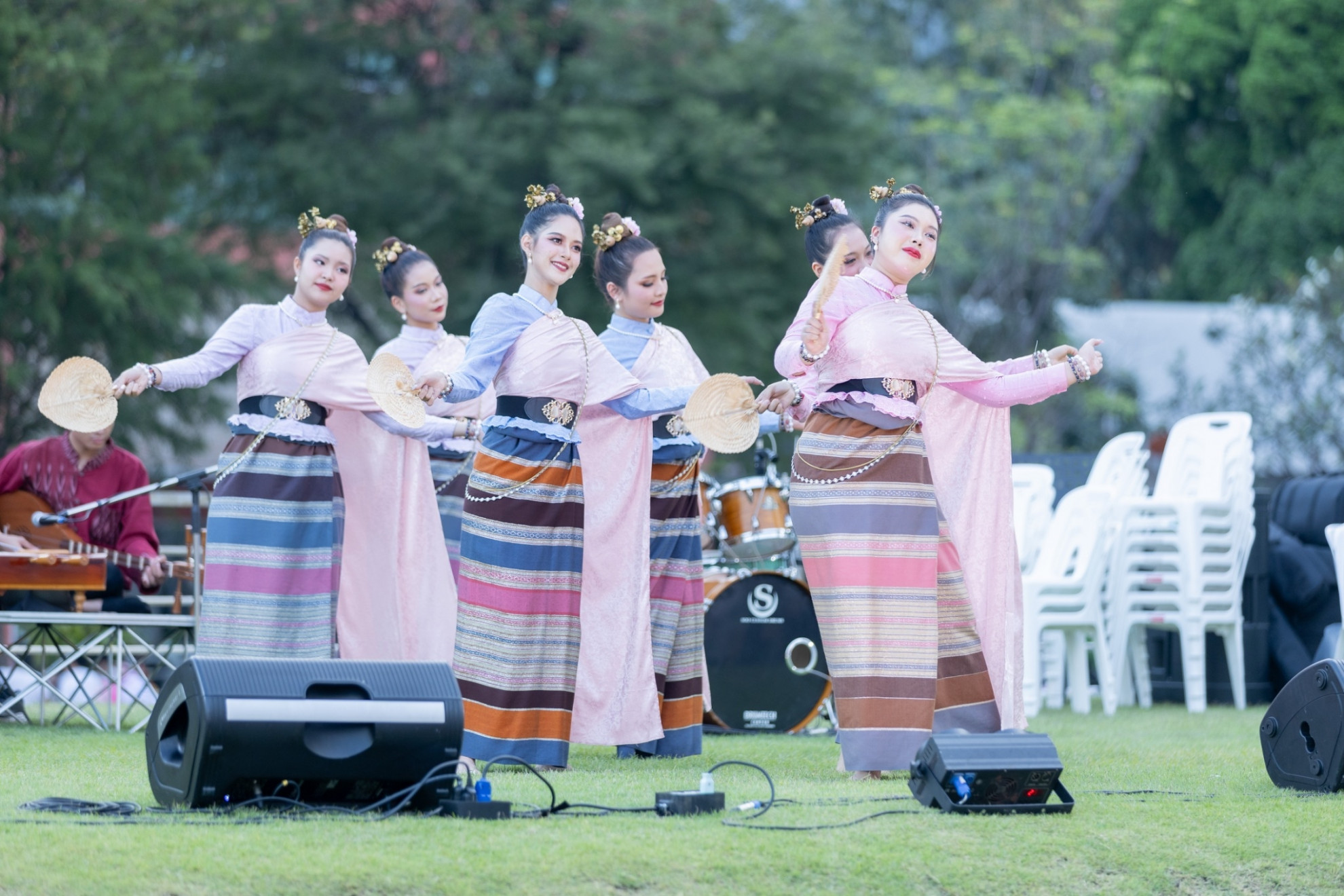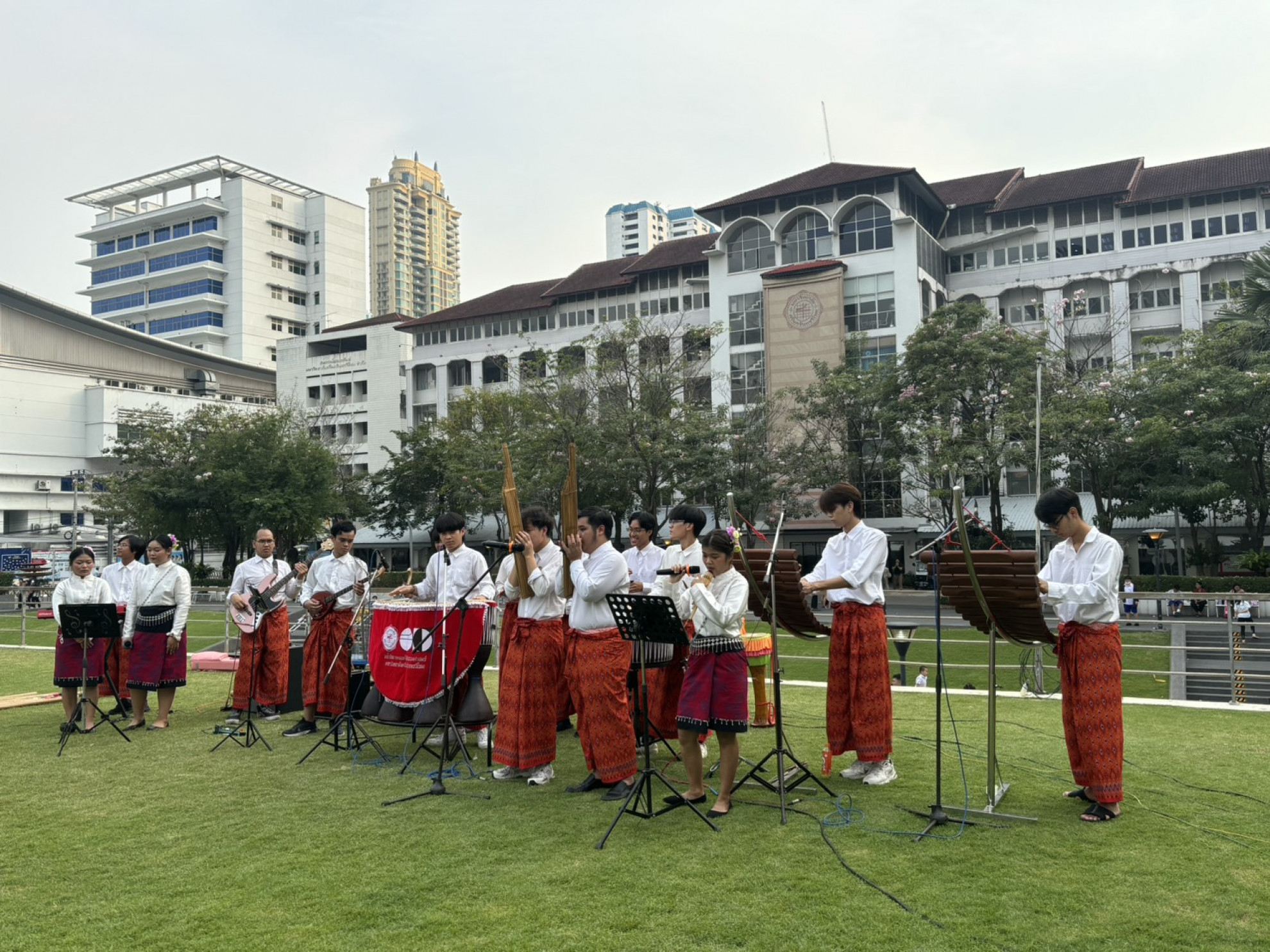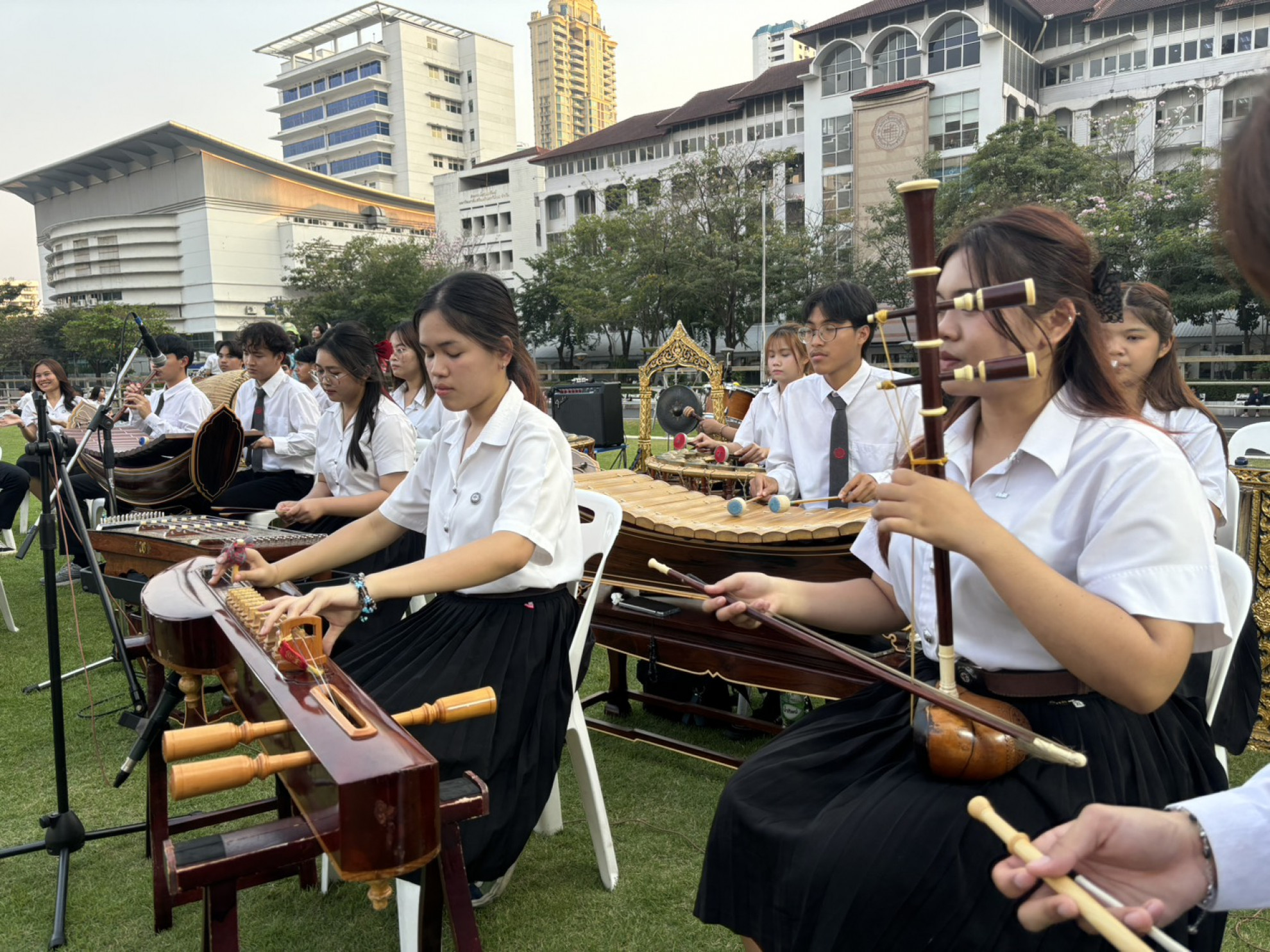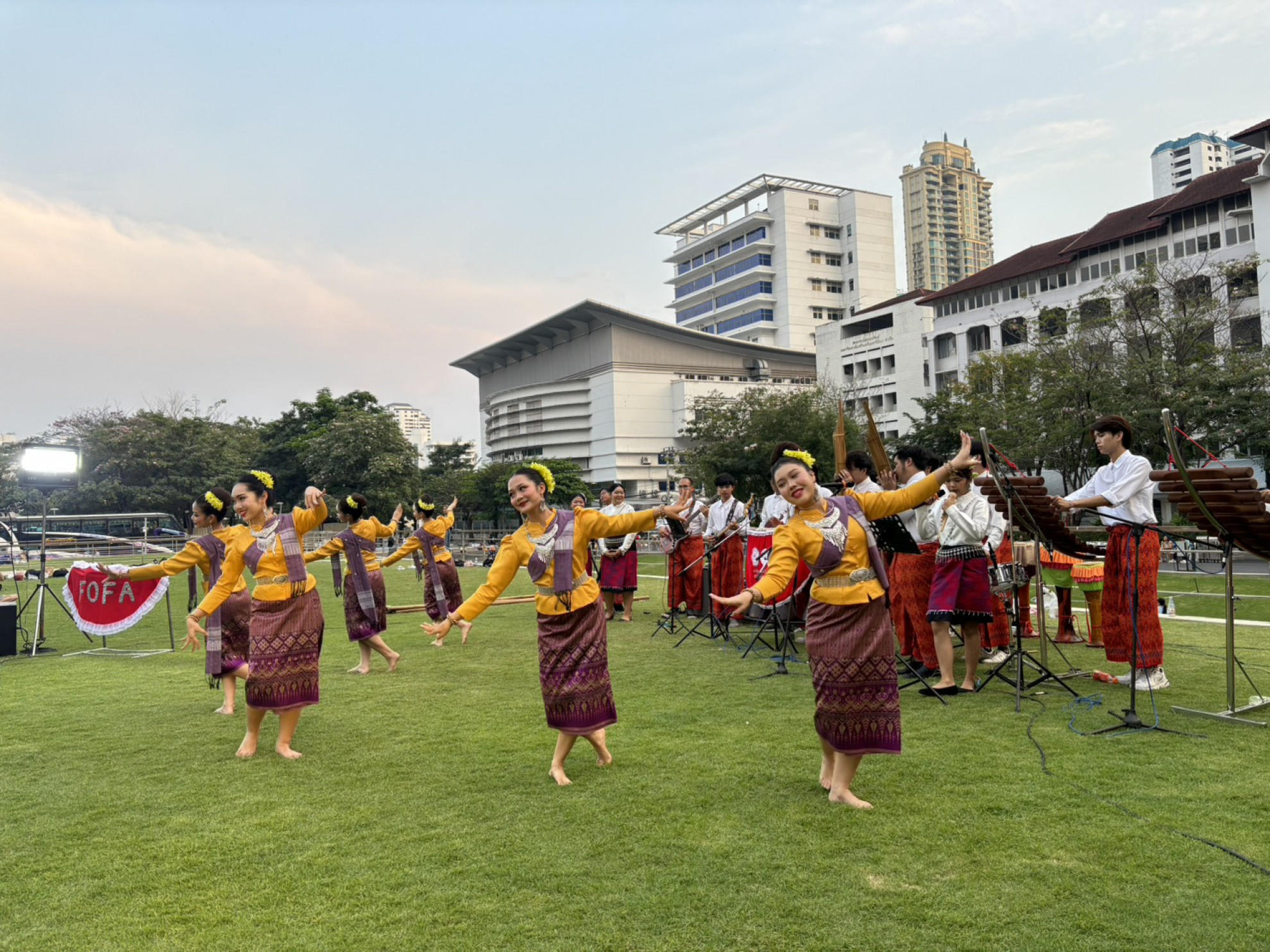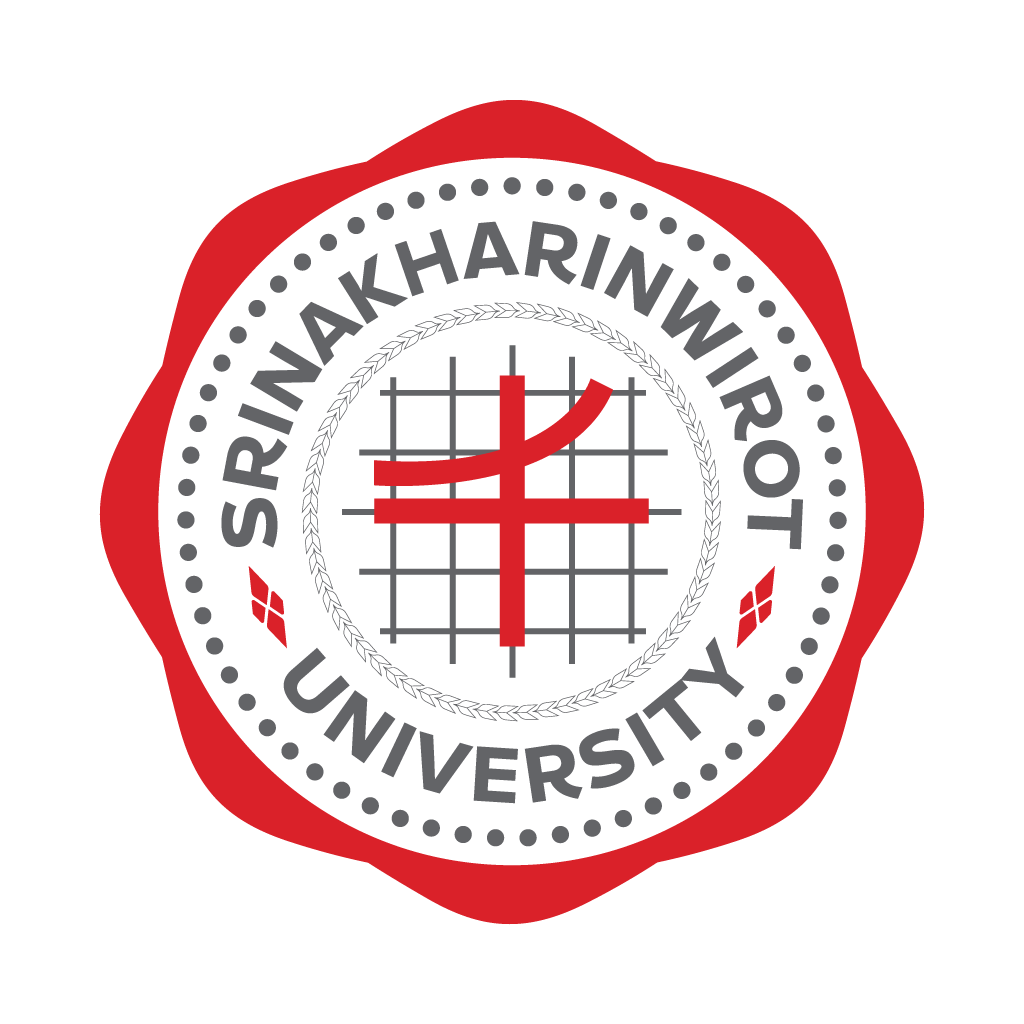





| Target | Indicator | Result |
|---|---|---|
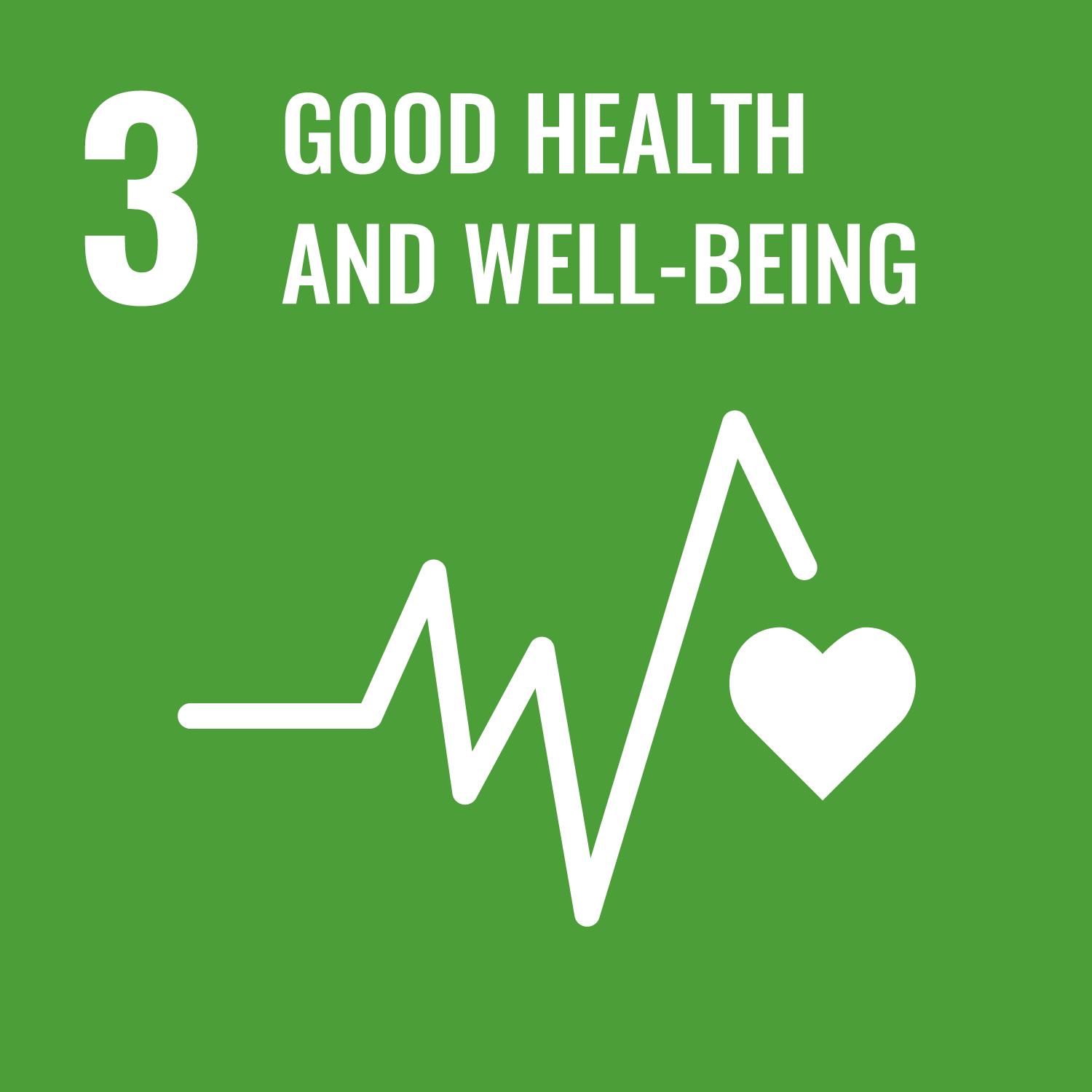
SDG 3
GOOD HEALTH AND WELL-BEING
|
||
| 3.4 By 2030, reduce by one third premature mortality from non-communicable diseases through prevention and treatment and promote mental health and well-being | 3.4.2 Suicide mortality rate | The project aligns with this indicator by promoting mental well-being among the elderly through Thai music (angklung) and performing arts activities, which help reduce stress, foster social connection, and create a sense of belonging. Such engagement in creative and communal activities lowers the risk factors associated with depression and social isolation, both of which are linked to suicide risk. By providing consistent opportunities for elderly participants to engage, express themselves, and feel valued, the project contributes indirectly to the prevention of suicide and supports broader efforts to reduce premature mortality from mental health–related causes. |
| 3.8 Achieve universal health coverage, including financial risk protection, access to quality essential health-care services and access to safe, effective, quality and affordable essential medicines and vaccines for all | 3.8.1 Coverage of essential health services (defined as the average coverage of essential services based on tracer interventions that include reproductive, maternal, newborn and child health, infectious diseases, non-communicable diseases and service capacity and access, among the general and the most disadvantaged population) | The project complements this indicator by integrating arts-based activities with health promotion, including physical movement and mental health assessments before and after participation. Although not a medical service in the traditional sense, the program expands the scope of essential health coverage by addressing non-communicable disease prevention (through physical activity), supporting mental health, and fostering community-based care. By providing accessible, culturally rooted activities that promote both physical and psychological well-being, the initiative enhances inclusivity in health services, especially for older adults, and supports the vision of universal health coverage that reaches vulnerable groups. |
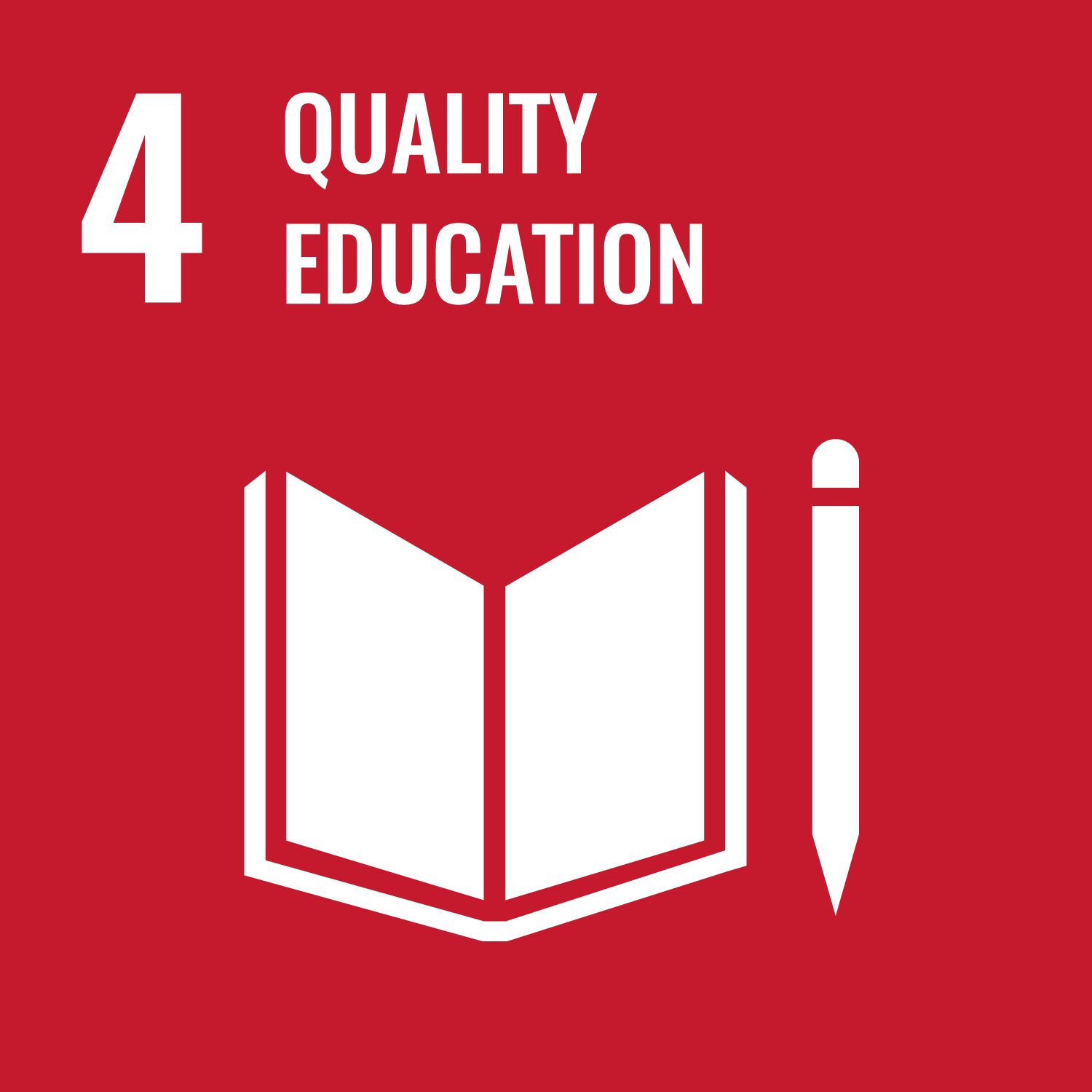
SDG 4
QUALITY EDUCATION
|
||
| 4.4 By 2030, substantially increase the number of youth and adults who have relevant skills, including technical and vocational skills, for employment, decent jobs and entrepreneurship | 4.4.1 Proportion of youth and adults with information and communications technology (ICT) skills, by type of skill | The project indirectly supports this indicator by integrating the documentation, presentation, and dissemination of music and performing arts activities through digital platforms. Nisit (students) are encouraged to apply ICT skills in recording performances, creating multimedia presentations, and sharing cultural knowledge with wider audiences. These practices not only enhance their digital literacy but also demonstrate how ICT can be used creatively to preserve and promote cultural heritage, thus expanding practical skills relevant for employment and lifelong learning. |
| 4.7 By 2030, ensure that all learners acquire the knowledge and skills needed to promote sustainable development, including, among others, through education for sustainable development and sustainable lifestyles, human rights, gender equality, promotion of a culture of peace and non-violence, global citizenship and appreciation of cultural diversity and of culture's contribution to sustainable development | 4.7.1 Extent to which (i) global citizenship education and (ii) education for sustainable development, including gender equality and human rights, are mainstreamed at all levels in (a) national education policies; (b) curricula; (c) teacher education; and (d) student assessment | The project aligns with this indicator by embedding cultural preservation, inclusivity, and community engagement within its educational framework. Through Thai drama, music, and performance traditions, students and community members gain awareness of cultural diversity, social responsibility, and the value of sustainable practices in safeguarding intangible heritage. By fostering respect for cultural rights, promoting intergenerational learning, and linking the arts with well-being, the initiative reflects principles of global citizenship and education for sustainable development that can be mainstreamed into curricula, teaching methods, and community-based assessments. |

SDG 10
REDUCED INEQUALITIES
|
||
| 10.2 By 2030, empower and promote the social, economic and political inclusion of all, irrespective of age, sex, disability, race, ethnicity, origin, religion or economic or other status | 10.2.1 Proportion of people living below 50 per cent of median income, by sex, age and persons with disabilities | The project aligns with SDG 10.2.1 (Proportion of people living below 50 percent of median income, by sex, age, and persons with disabilities) by creating inclusive cultural and recreational spaces where elderly individuals, youth, and marginalized groups can actively participate. By offering free access to music and performing arts activities, the program reduces barriers related to income, age, or ability, ensuring that disadvantaged populations benefit equally from health, education, and cultural opportunities. This inclusive participation helps empower vulnerable groups, strengthens social cohesion, and promotes equity, thereby supporting broader efforts to reduce inequality in both income and access to opportunities. |
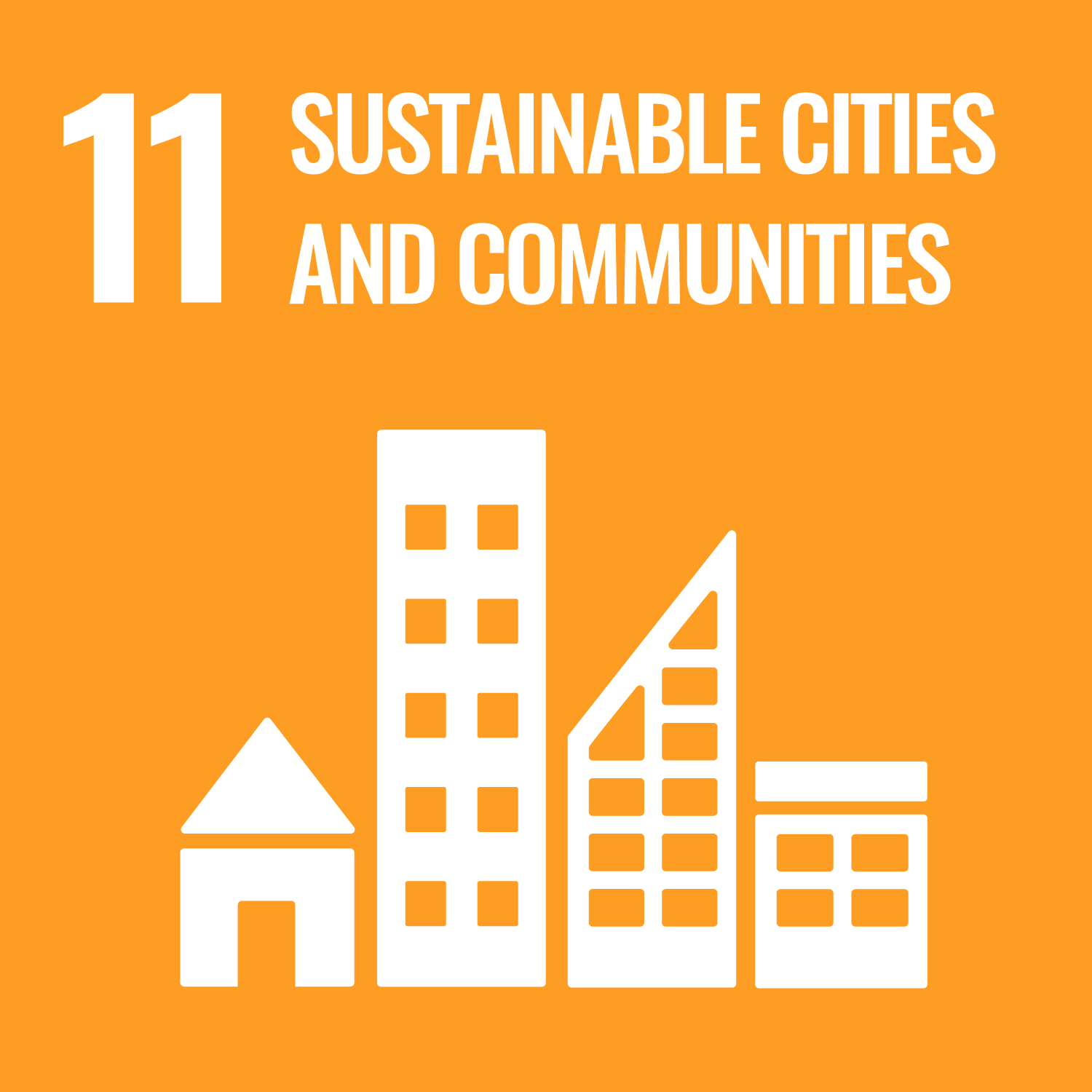
SDG 11
SUSTAINABLE CITIES AND COMMUNITIES
|
||
| 11.4 Strengthen efforts to protect and safeguard the world's cultural and natural heritage | 11.4.1 Total expenditure (public and private) per capita spent on the preservation, protection and conservation of all cultural and natural heritage, by type of heritage (cultural, natural, mixed and World Heritage Centre designation), level of government (national, regional and local/municipal), type of expenditure (operating expenditure/investment) and type of private funding (donations in kind, private non-profit sector and sponsorship) | |
The Academic Service Project (Saensaeb Model): Music for Well-being and Performing Arts to Enhance Cultural Spaces was organized to promote the physical and mental health of the elderly through Thai musical activities such as angklung performance, combined with traditional dance and community-based cultural expression. The project integrated teaching and research in Thai drama, ceremonial music, and cultural tourism, while also providing opportunities for students to apply theoretical knowledge into practice through creative performance, event management, and problem-solving. By incorporating health assessments before and after activities, the project demonstrated how arts can support well-being, reduce stress, and improve physical movement, aligning with SDG 3 (Good Health and Well-being, Targets 3.4 and 3.8). At the same time, it enhanced vocational and creative skills for students and community members, supporting SDG 4 (Quality Education, Targets 4.4 and 4.7), and promoted inclusivity by engaging participants of all ages, genders, and backgrounds in cultural and recreational activities, contributing to SDG 10 (Reduced Inequalities, Target 10.2). Furthermore, by preserving and showcasing traditional northern and northeastern performing arts, the project safeguarded local cultural heritage and created accessible cultural spaces, reinforcing SDG 11 (Sustainable Cities and Communities, Target 11.4). Through the integration of health, education, and culture, the project fostered sustainable community development and strengthened the role of arts as both a cultural and social driver.
Community Impact: The project played a vital role in promoting both physical and mental health among the elderly through creative activities such as Thai music (angklung) and traditional performing arts workshops. Participants demonstrated clear improvement in physical ability, particularly in bilateral hand coordination, ranging from moderate to significant progress. Mental health assessments also showed participants scored better than average both before and after the activities, highlighting the positive psychological effects. Beyond health, the project created cultural spaces, fostered the preservation of local traditions, and enhanced public understanding of cultural heritage, with 99.4% of participants reporting an increased appreciation of local culture—meeting and exceeding the project’s objectives.
University Impact: The project demonstrated the university’s proactive role in academic service to society through the strategic “Saensaeb Model.” It received 96.8% overall satisfaction from participants and provided a platform for faculty, staff, and students to apply artistic and musical knowledge in real contexts. A total of 22 student performances were showcased, alongside ongoing workshops, effectively integrating teaching, research, and academic service. The project also promoted interdisciplinary collaboration between the arts and health sciences, reinforcing the university’s capacity to drive sustainable development goals in a tangible and impactful way.
National Impact: At the national level, the project supported multiple SDGs: SDG 3 (Good Health and Well-being) by improving physical and mental health outcomes, SDG 4 (Quality Education) by integrating creative and vocational learning, SDG 10 (Reduced Inequalities) by ensuring inclusive participation across age groups, and SDG 11 (Sustainable Cities and Communities) by safeguarding cultural heritage. With 357 participants, equivalent to 119% of the original target, the initiative highlighted strong public engagement and scalability potential. It serves as a model for leveraging cultural capital to improve quality of life, transferring academic knowledge to society, and reinforcing the role of arts and culture in advancing sustainable social development.
Cross-disciplinary Integration: The project bridged humanities (arts, performing arts, and music) with health sciences (basic medicine and health sciences) by using music and performing arts as tools for promoting elderly well-being. This interdisciplinary approach demonstrates how knowledge across fields can be combined to sustainably improve people’s quality of life, aligning directly with the holistic vision of the SDGs.
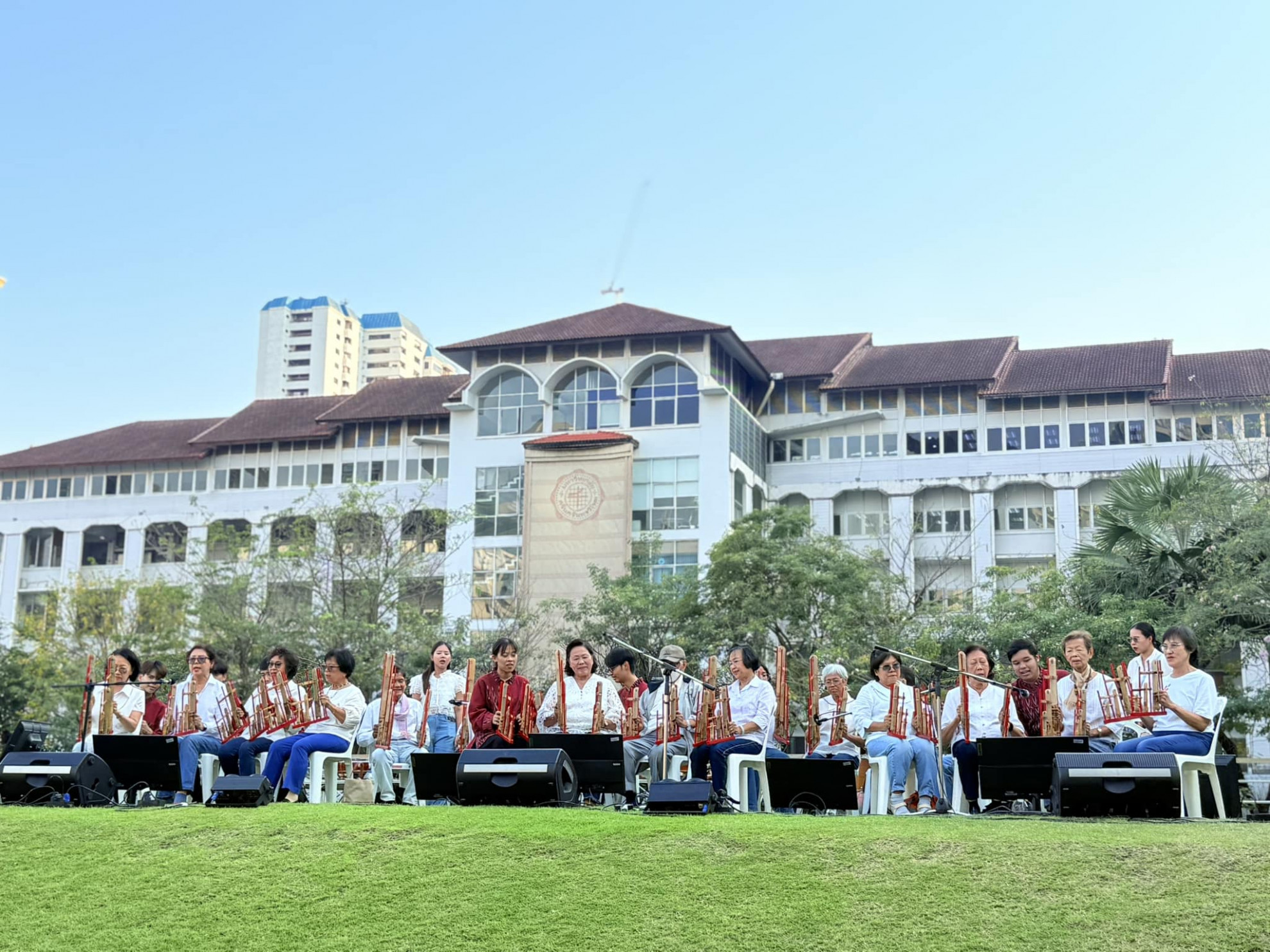

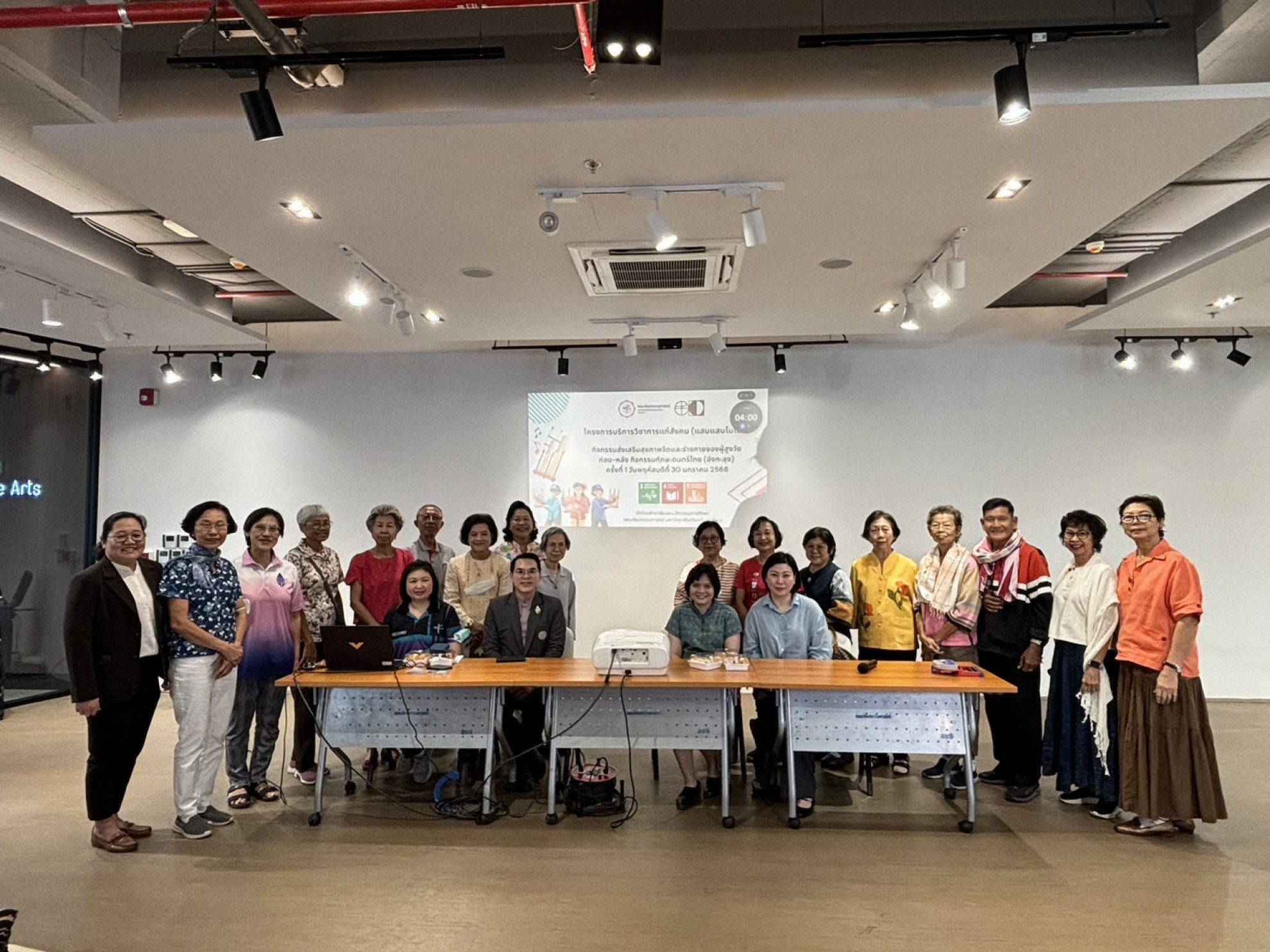
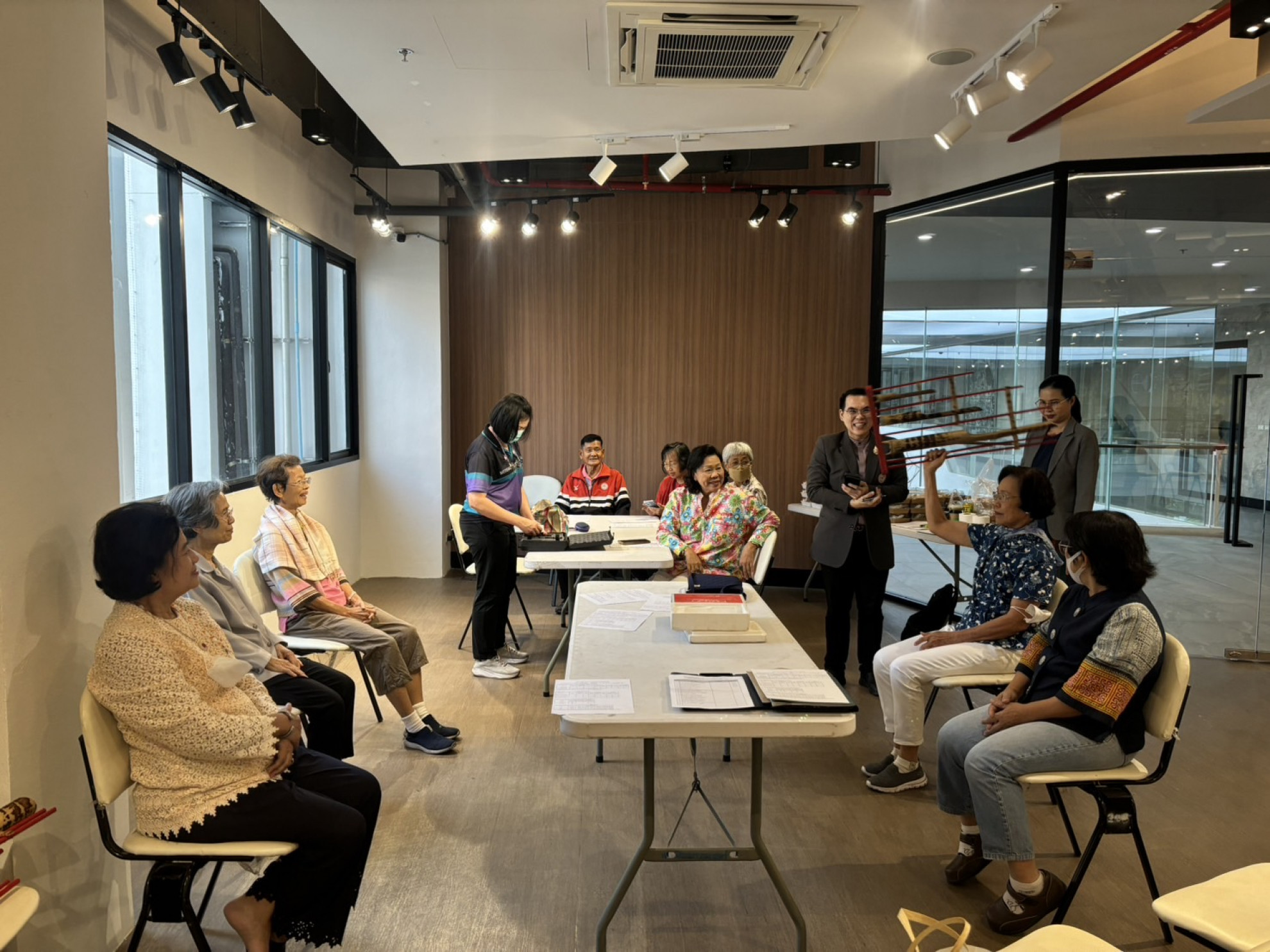
_250221_1.jpg)
